- Tours & Experiences
- Tailor-made Trips
- Bahasa Indonesia
We are happy to see you again!

Continue with
Or use email.
No Account? Create one
Create account
Already have an account? Sign in
Quickly Sign up with
I agree to Japan Travel's Terms of Service and Privacy Policy . Terms of--> and acknowledge that Japan Travel's Privacy--> applies to me.-->
Email reset password link
Please check your inbox and click the link we will send to you.
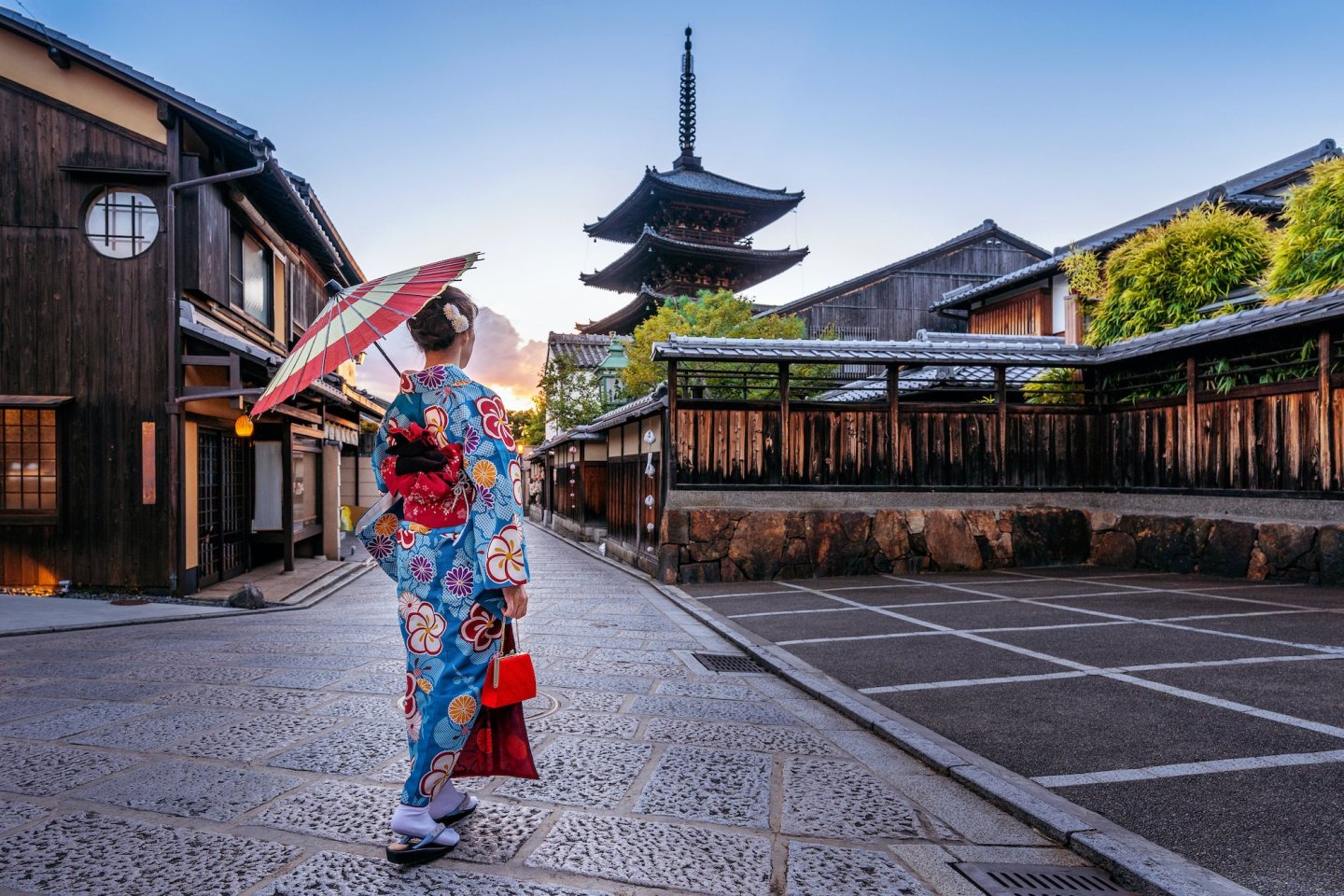
Japan's ancient capital home to sacred shrines and Zen gardens
Top attractions in kyoto.

Nijo Castle

Fushimi Inari Taisha
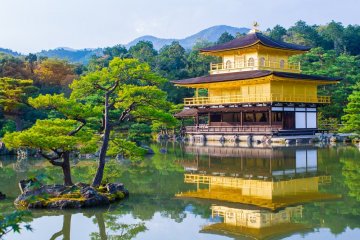
Kinkakuji Temple
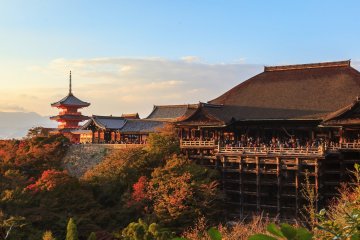
Kiyomizu-dera Temple
Around kyoto.

Along a river in the West of Kyoto lies Arashiyama, a rural suburb of Kyoto. Literally “Storm Mountain”, Arashiyama is actually a tranquil place where you can wind down and relax in a beautiful..
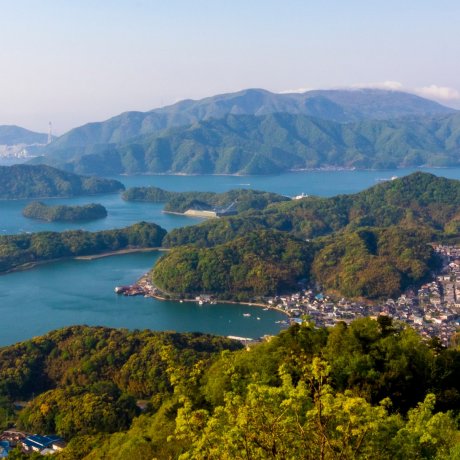
Maizuru is a port city in northern Kyoto along the coast of the Sea of Japan. It can be reached in just 2 hours from the central Kyoto City, where most visitors to Kyoto converge. The city is..
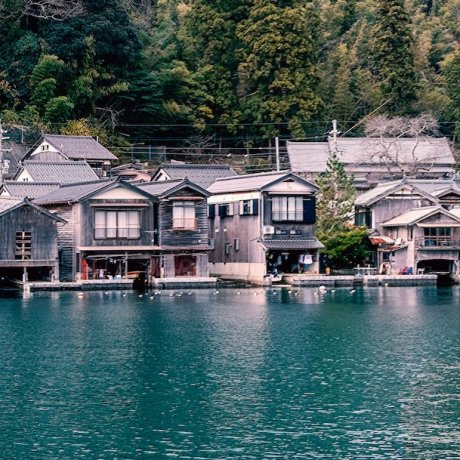
Ine (伊根町) is a town located in Yosa District, in northern Kyoto Prefecture. It is known for its traditional wooden fishing houses, or Funaya, that line Ine Bay. The region is located to t..
About Kyoto
Japan’s capital from AD 794 to 1868, the list of possible tourist destinations in Kyoto Prefecture (京都府, Kyōto -fu) is endless.
You can attempt to visit all of major sites, including but certainly not limited to: Fushimi Inari Shrine and its brilliant vermillion row of torii gates, its many temples (most notably Kiyomizu-dera , Sanjusangen-do , and Kinkaku-ji ), Nijo Castle , and Amanohashidate (one of the Three Views of Japan).
Or you can attempt to “experience” Kyoto and its rich culture: appreciate the traditional architecture and maiko of the Gion district , witness the Gion Festival (held every July), and indulge in the various delicacies Kyoto has to offer, such as Uji matcha green tea, tofu, and various Japanese confectioneries. Kyoto is on the bucket list of many a traveller, and for good reason.
- Things to Do in Kyoto
- Autumn Leaves
Kyoto Top 10
- Recommended

Kyoto Fall of 2022

Kyoto Fall 2022 Day Two

Kyoto Fall 2022 Day Three

Amanohashidate Motoise Kano Shrine

Nintendo Museum Coming Autumn 2024

Discover the Magic of Yuzen Dyeing

Causette Joli

Zuishin-in Daihonzan Temple

Jojakko-ji Temple

Iwatayama Monkey Park

Gion Matsuri

Kodai-ji Autumn Illumination

Kyoto Gozan Okuribi

Kiyomizu-dera Autumn Illumination

NAKED Sakura Festival

The Kimono Forest Of Arashiyama

Takashi Murakami - Mononoke Kyoto

A Walk Along Kamo River
Upcoming kyoto events.
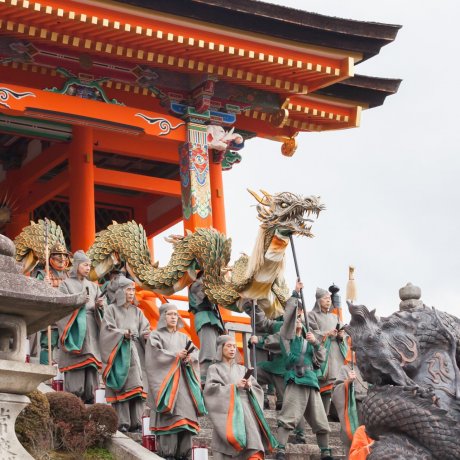
Seiryu-e Dragon Festival 2024
The Seiryu-e festival is held every spring and autumn near Kiyomizu-dera. The Seiryu or blue dragon is believed to be a guardi..
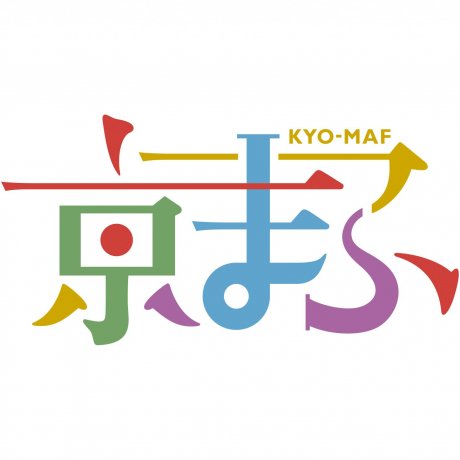
Kyoto International Manga & Anime Fair 2024
The Kyoto International Manga & Anime Fair (KYO-MAF) is an annual event that showcases the talent in the animation and graphic novel..
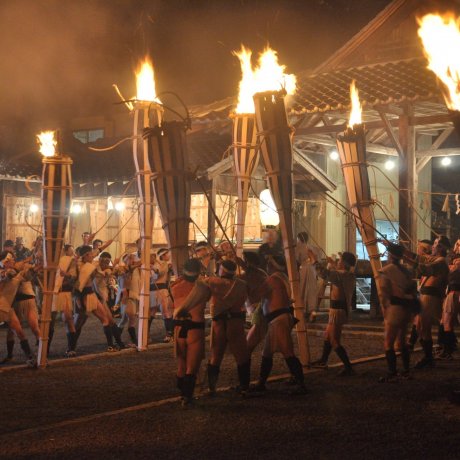
Fire Festival of Kurama Temple 2024
The Kurama Five Festival is one of the most spectacular events in Kyoto and takes place every year on the evening of October 22nd...
Where to eat in Kyoto

Aburi-mochi at Ichiwa & Kazariya
Ichiwa is an thousand year old store with longstanding connections with Yasurai Matsuri festival at Imamiya Shrine selling aburi-mochi,..

Chao Chao Gyoza
Chowing down on gyozas and cheap beer at Chao Chao Gyoza
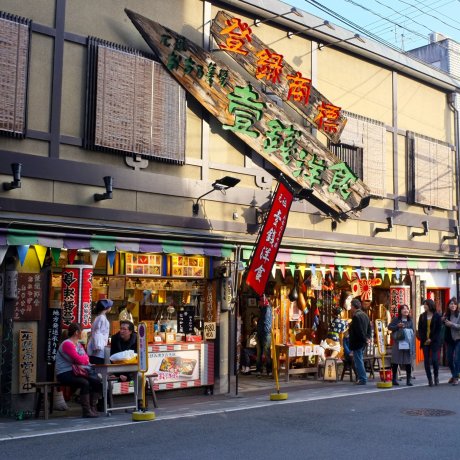
Taste the Famous Issen Yoshoku
Kyoto is famous for a lot of things. But when it comes to food, Issen Yoshoku is one recommended dish that you should not miss.
Places to stay in Kyoto
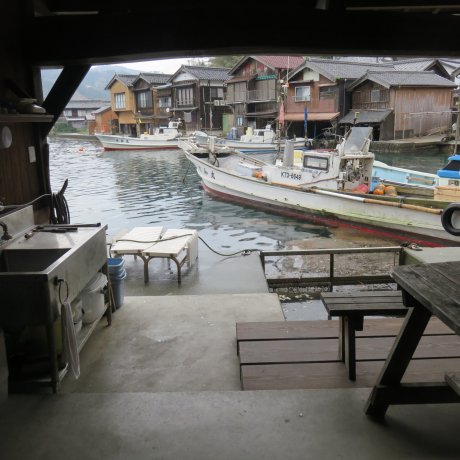
Ine Boathouse Ryokan
At Ine there are surprises and delights in every season. In winter the mountains are blanketed by snow, and you are rewarded by..

Tokyu Harvest Kyoto Takagamine
Tokyu Harvest Club Kyoto Takagamine & Viala is a gorgeous hotel inside the historical Shozan Resort Kyoto.

Kyoto Guesthouse Roujiya at Nijo
More like a chic home stay from an interior decoration magazine, this guesthouse is both elegant and comfortable.
Latest Kyoto Reports
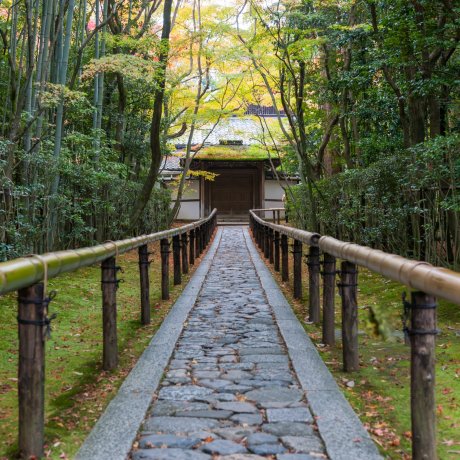
Maple Garden and Autumn Leaves
Kōtō-in, a sub-temple of Daihonzan Daitoku-ji, one of the largest Zen temples in Kyoto. Here lies the grave of Hosokawa Sansai..

Causette Joli is a Japanese cosmetics company that sells nail products that embody Japan’s cultural, natural, and seasonal bea..
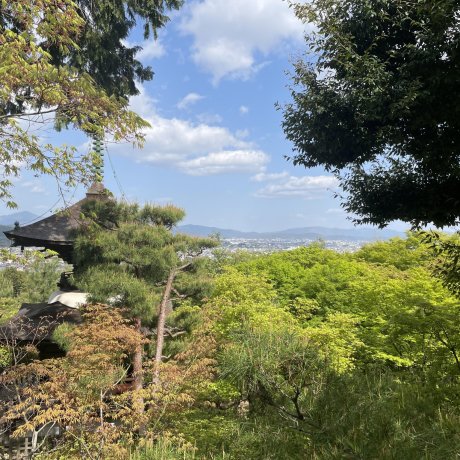
Let us know how we can help.

Kyoto (���s, Kyōto) served as Japan's capital and the emperor 's residence from 794 until 1868 . It is one of the country's ten largest cities with 1.5 million inhabitants and a modern face.
Over the centuries, Kyoto was destroyed by many wars and fires, but due to its exceptional historic value, the city was dropped from the list of target cities for the atomic bomb and escaped destruction during World War II . Countless temples , shrines and other historically priceless structures survive in the city today.
Top attractions in Kyoto
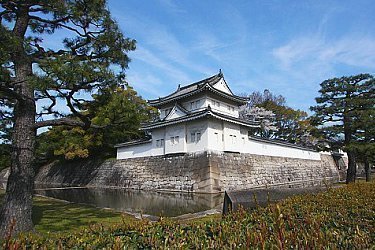
Kyoto by interest

Getting there and around
Itinerary ideas.
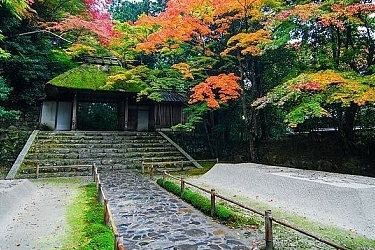
- Walk the Philosopher's Path
- Beautiful temples and shrines
- Attractive Higashiyama streets
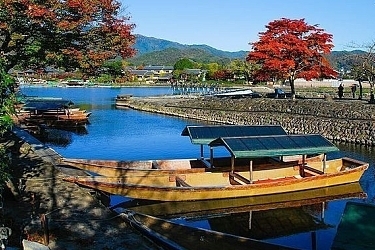
- See the bamboo groves
- Visit the monkey park
- Serene temples and gardens
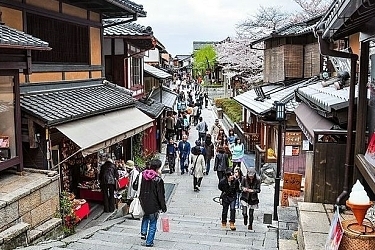
- Visit beautiful temples
- Explore Higashiyama and Gion
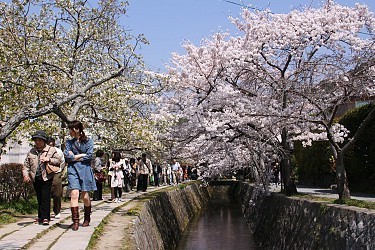
- Visit beautiful temples and shrines
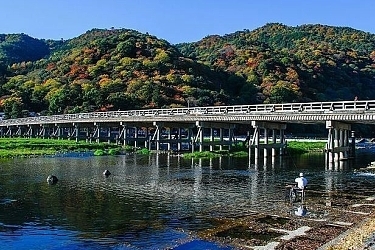
- Explore attractive Arashiyama
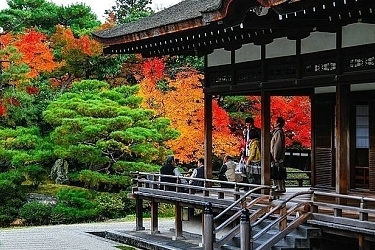
- Explore Kyoto's northern side
- Visit Kinkakuji , Ryoanji and Ninnaji temples
Questions? Ask in our forum .
Links and Resources
Kyoto official travel guide, cycle kyoto, hotels around kyoto, kyoto hotel guide.
How to choose the best places to stay in Kyoto
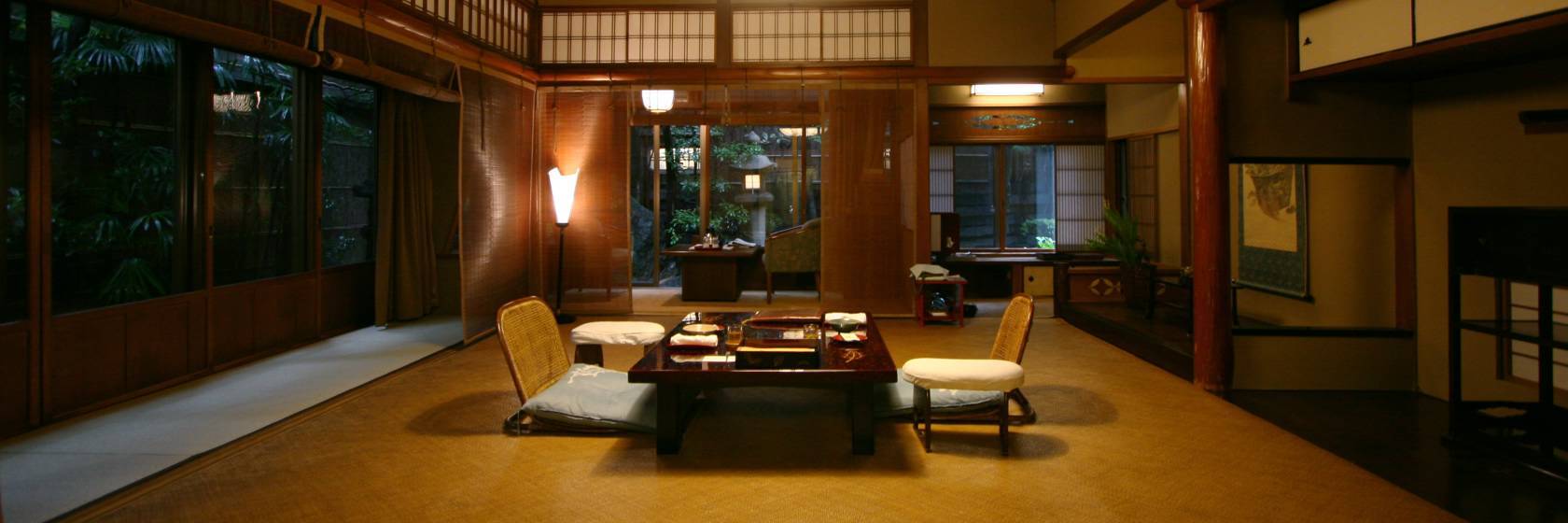
Experiences around Kyoto
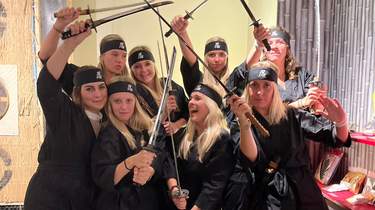

InsideKyoto.com Newsletter

Japan Reopens!
Visa-free independent travel to japan formally begins on october 11th 2022.

Photo: Sunrise at Arashiyama Bamboo Grove
At last, japan is reopening.
On Thursday 22nd September, Japan’s Prime Minister Kishida announced in New York that the country would restore visa-free travel to citizens of many countries. After more than two and a half years of seclusion, free independent travel returns on October 11th (for full details, see our page Can I Travel to Japan Now? ). With all the pent-up demand for Japan travel, you’re going to have to act fast to enjoy the country before the crowds return.
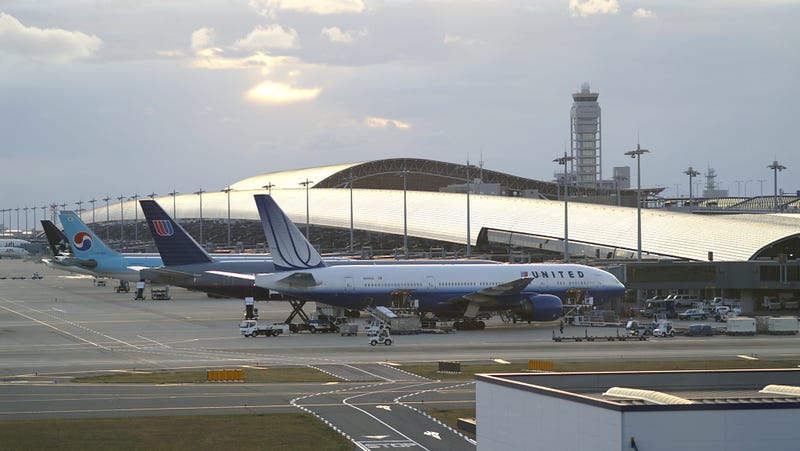
Photo: Kansai International Airport
Mind-blowingly cheap airfares to japan.
You’d think that with high oil prices and crazy demand, fares to Japan would be through the roof. But we’ve found some amazing roundtrip fares from, for example, Los Angeles to Tokyo. The nearest airport to Kyoto is Osaka International Airport, but Kansai International Airport (KIX) is also an option. See our comprehensive Kyoto airport guide to plan your trip and check the latest airfares.

Photo: Old Modern Garden Suite © OldKyoto
Great kyoto hotel deals.
The yen is at multi-decade lows against the US Dollar and three years of closed borders have resulted in some unbelievable bargains on hotel rooms and Kyoto ryokan (traditional Japanese inns). See our hand picked recommendations of the best Kyoto Ryokan , beautiful Kyoto townhouses ( machiya ) like the one pictured above, and Kyoto hotels to suit all budgets . Our Where To Stay In Kyoto guide helps you understand the layout of the city and the most convenient locations to look for accommodation.
Places To See In Kyoto Before The Crowds Return
If you visited Kyoto in the years leading up to the pandemic, you know how crowded the major sights were. For a few blissful months after Japan reopens, you’ll be able to enjoy some of the sights in Kyoto that we simply too crowded before the country closed down. Here are three;
Kiyomizu-dera Temple
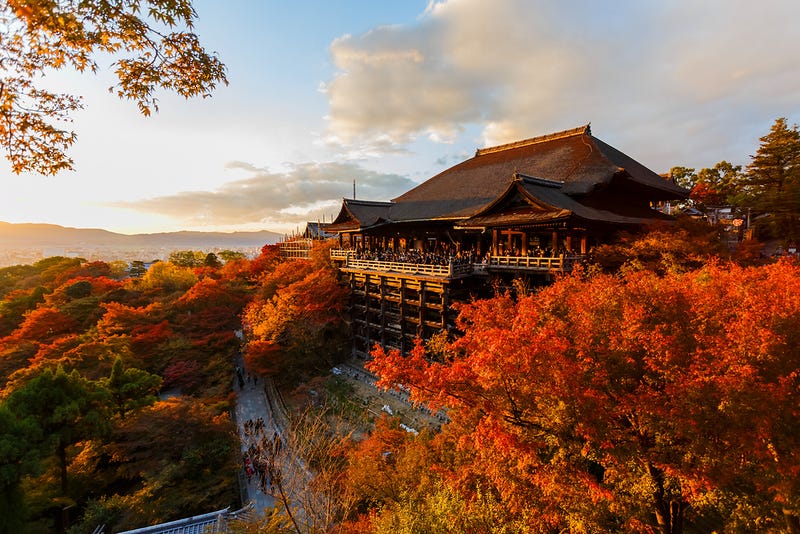
Read more about Kiyomizu-dera Temple , one of Kyoto’s biggest temples with views across the entire city.
Ginkaku-ji Temple

Read more about Ginkaku-ji temple , the “Silver Pavilion”.
Nishiki Market
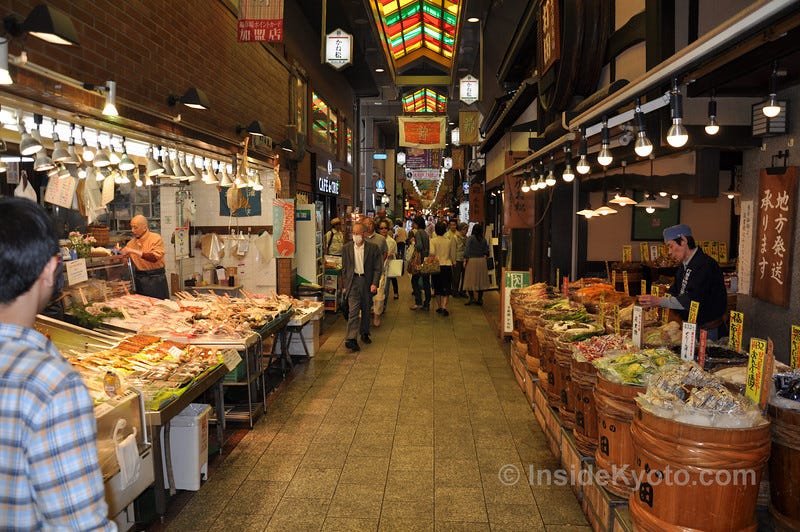
Read more about Nishiki market , known to locals as “Kyoto’s pantry”.
Now that Japan is reopening, we’ll be publishing regular updates and information on new hotels, attractions and restaurants. Stay tuned to get the best of Japan 2.0.
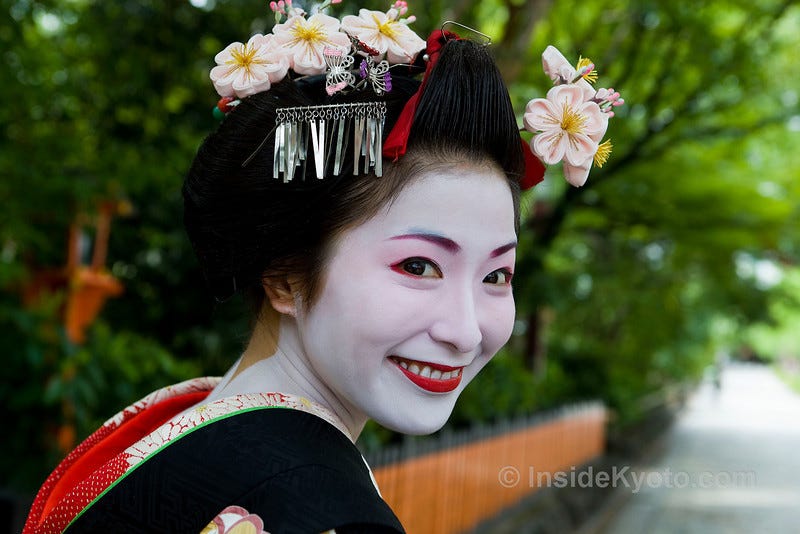
Kyoto Vacation Checklist
For all the essentials, see my First Time In Kyoto guide
For ideas on how to structure your trip, see my list of Kyoto Itineraries
See my one page guide on Where To Stay In Kyoto
You can buy a Japan SIM card or an unlimited data pocket wifi router online before you arrive in Japan for collection on arrival
View my comprehensive Packing List For Japan
Save a ton of money with the Japan Rail Pass
Why it's essential to have travel insurance for Japan
Visiting Tokyo or Osaka too?
Don't forget my companion websites InsideOsaka.com and TrulyTokyo.com for in-depth guides to these fascinating cities. Happy travels! Chris Rowthorn
Ready for more?
14 things to know before visiting Kyoto

Dec 11, 2023 • 6 min read

Plan your trip to Kyoto with these tips on packing, where to stay and etiquette © anek.soowannaphoom / Shutterstock
Kyoto is the embodiment of traditional Japanese culture.
It's a place where authentic crafts are kept alive and historic temples and teahouses line the narrow streets. So perhaps unsurprisingly, it’s also a destination where etiquette can have a big part to play.
Be ready for your visit with this rundown of some key things to know before going to Kyoto .

1. Tune in to the seasons
Kyoto is a very seasonal destination , so plan your trip accordingly. The spring cherry blossom season is when the city is at its most photogenic but also its busiest. If you want to visit during this time, you’ll need to book accommodations a year or more in advance – expect to pay premium prices. The same is true of the fall foliage season, although not to quite the same degree. Summer sees the streets come to life with festivals, while winter is the quietest time in Kyoto. New Year is a big holiday in Japan, with many shops, restaurants, museums and other businesses closing between December 29 and January 3.
2. Think carefully about where you want to stay
Kyoto has plenty of great neighborhoods to choose from, but southern Higashiyama and downtown Kyoto are among the most convenient for sightseeing. In terms of accommodations, you can find everything from budget guesthouses to high-end international hotels. For a more authentic Japanese experience, consider spending a night in a ryokan inn, where you’ll sleep on futons on tatami mat floors with traditional meals served in your room.
3. Pack shoes you can slip on and off
When traveling in Kyoto, you’ll find yourself having to take your shoes on and off frequently, so choose your pairs wisely, and wear nice socks! Outdoor shoes are generally not worn in tatami mat rooms, people’s homes, or traditional temples, restaurants and ryokan inns. You can normally tell when you’re expected to take your shoes off because there will be a raised step where the flooring changes. You’ll see other people’s shoes lined up, and slippers may be set out for you to wear inside. Be aware that there’s usually a separate pair of slippers to wear in the bathroom – don’t forget to swap them back afterward!
4. Explore on foot
Not only is Kyoto a very walkable city, but navigating its streets on foot also enables you to discover lots of lesser-known but no less impressive spots. From tiny restaurants and bars with counter seats only to ancient shops specializing in wagashi sweets, tofu or local crafts, many of Kyoto’s most interesting locations aren’t in obvious places. You might come across picturesque shrines down tiny alleyways, find street stalls serving freshly baked mochi rice cakes or spot a kimono-clad maiko (apprentice geisha).

5. The city will probably be crowded
Kyoto is home to some of the most famous and beautiful sightseeing spots in Japan , and they attract large numbers of domestic and international tourists. Big-name attractions such as Kinkaku-ji temple, the Arashiyama Bamboo Grove and Kiyomizu-dera temple are definitely worth visiting, but time your trip for the early morning or toward the end of the day to avoid the crowds. Similarly, when visiting the endless red torii gates of Fushimi Inari-Taisha shrine, head farther up the mountain to find room to breathe.
6. Kyoto isn’t all temples and shrines
Kyoto is the spiritual heart of Japan, and with some 2000 temples and shrines to explore, you’d be forgiven for thinking that’s all the city has to offer. But there’s so much more to discover. Head to Nishiki Market to sample top local cuisine, take an evening stroll around the atmospheric streets of Gion and admire the mighty Nijō-jō castle. Kyoto also has a wealth of prestigious museums to discover, plus pleasant parks and serene walking paths .
7. Allow time to explore the wider region beyond
You could easily spend your entire trip in Kyoto city, but if you have time, broaden your itinerary to include day trips to other parts of the region. The surrounding prefecture has fantastic hiking routes within easy reach that let you experience the area’s stunning natural scenery, as well as quieter temples such as Kurama-dera and Enryaku-ji . Smaller towns, such as coastal Kinosaki Onsen and green tea-loving Uji, are also great for a day out.
8. Mind your manners
Politeness is hugely important in Japanese society. Although tourists will be forgiven the occasional etiquette breach, it’s always best to be courteous. That means not talking too loudly on public transport, avoiding eating on the sidewalk and allowing room for others to pass on the narrow streets. Littering and cutting in line are seen as particularly rude. Smokers should take care to use the designated smoking areas, and many parts of the city are now no-smoking zones.

9. Pay in cash, but don't leave a tip
Tipping isn’t customary in Japan, and in fact, it can be seen as insulting. If you attempt to leave a tip, it will almost definitely be declined. As a side note, in most restaurants, you pay up at the front counter rather than at your table. Cash is far more commonly used than card payment, and you should place your money in the small tray provided rather than hand it directly to the cashier (this goes for shops, hotels and other locations, too). They will place your change in the same tray for you to pick up once the transaction is complete.
10. Geisha are not a tourist attraction
Lots of people hope to spot geisha – or geiko as they’re known in Kyoto – when visiting the historic Gion district. However, it’s important to be respectful when doing so. Any geiko you see will probably be on their way to an appointment and won’t appreciate being swarmed by strangers! Ask politely if it’s okay to take a photograph, rather than behaving like paparazzi.
11. Kyoto is an extremely safe city
Crime rates in Kyoto are low, the tap water is clean, and if you lose something, it will almost certainly be returned to you. It’s safe to walk the streets at night, even as a solo traveler, and the city is welcoming to LGBTIQ+ visitors. Of course, you should still exercise common sense during your stay and take the normal precautions that you would at home. If you need help, you’ll find police boxes (known as kōban ) on most intersections, although the police inside might not speak much English.
12. Watch out for bikes
Cycling is common in Kyoto, and it’s a convenient way to get around the city. Many people ride on the sidewalk, so keep an eye out when you’re walking or leaving shops and restaurants. If you hear a bell, someone behind you is probably trying to get past.
13. In an emergency, dial 119
In a medical emergency, dial 119 for the ambulance service (this is also the number for the fire department). Medical care in Kyoto is reasonably priced and of a high standard, although it is always advisable to take out travel insurance before your trip to ensure that you can receive treatment at a hospital or clinic should you need it. Police can be reached by dialing 110.
14. Earthquakes are common; serious earthquakes are not
Earthquakes are fairly frequent in Japan; however, most are low-intensity and cause little to no damage. You’ll find instructions in your accommodations about what to do in the unlikely event of a serious quake.
This article was first published Dec 16, 2021 and updated Dec 11, 2023.
Explore related stories

Aug 23, 2024 • 7 min read
There’s nothing like hitting the road in an RV or camper van – these are the best destinations around the world for an RV road trip.

Aug 8, 2024 • 13 min read

Aug 5, 2024 • 6 min read

Jul 12, 2024 • 6 min read

Jun 12, 2024 • 8 min read

May 3, 2024 • 13 min read

May 1, 2024 • 9 min read

Apr 14, 2024 • 6 min read

Mar 31, 2024 • 7 min read

Mar 28, 2024 • 6 min read

Join the Voyages Community

Don't plan your trip to Kyoto without this!
Discover Japan's most beautiful city up close in the Voyages Kyoto Travel Guide
In this FREE Kyoto Travel Guide, you'll get:
- A 72-hour itinerary for your Kyoto trip
- Restaurant recommendations and descriptions
- Illustrated maps with places to visit in Kyoto
No spam. No sharing your info. Unsub anytime. ❤️

- For Media & Travel Trade

- About Kyoto
Arts & Crafts
- Town & Architecture
Temples & Shrines
Eat & Drink
Festivals & events.
Accommodations
- Activities & Experiences
Sustainable Activities
Morning & nightlife, itineraries.
- Families with kids
Travel Tips
Destination index.

By using this site, you agree to the use of cookies. See our privacy policy for more information. This site uses machine translation, so content is not always accurate. Please note that translated content may differ from the original English page.
Think Local
Kyoto Summer Special Openings 2024
KYOTO CREATIVE PARK 2024
Jidai Matsuri 2024
Kyoto Travel Comfort Map & Real-time Webcast
Experiences
We added the new “Events in Kyoto” brochure (Sep 16 - Sep 29)
Explore and protect kyoto's historical buildings with preserve kyoto gift [pr], paid viewing seats for the jidai matsuri festival are now available for purchase, moon viewing events in 2024, kyomaf 2024 - special contents of the biggest anime & manga event in kyoto (september 21st & 22nd), avoid heatstroke while traveling in japan, dig into kyoto.
What’s New in Kyoto
Help protect Kyoto’s historical scenery and receive a Preserve Kyoto dining voucher [PR]
Moon Viewing Events - "Kangetsu Kai" in 2024
Jidai Matsuri Festival Procession 2024 Sales information: Paid Viewing Seats
Hidden Gems of Kyoto - Yamashina
Harvest Seasonal Vegetables in an Illuminated Night Field - BNR Farm
KYOMAF 2024 - Special Contents of the Biggest Anime & Manga Event in Kyoto
Special Experiences of the Kyoto Gozan Okuribi Bonfires
Experience a Deeper Kyoto Through Noh with a Theatre Fan - Discover Noh in Kyoto
Life-changing experiences in Kyoto. What are the businesses working to create tourism content b ...
What is Tanabata?
Transportation

Getting to Kyoto

Getting around Kyoto
Kyoto Restaurant Winter Special 2024
Night sightseeing in Kyoto: Enjoy the splendid views and special events
NAKED Summer Evening Cool World Heritage Site Kamigamo Jinja Shrine
Motorbike Tours - A New Choice for Discovering Kyoto Kyoto Tour ~Healing~&~Ancient Capital ...
Close Your Eyes, Open Your Heart Look Inside Yourself and Understand Impermanence Stress Manage ...
The Kyoto Sightseeing Bus will run a special route for Kyoto Winter Special Openings
The ❛new normal❜ for tourism in Kyoto
A Muslim Kyoto Resident Shares Her “Favorite Kyoto”
Recommended model itinerariesThe shape of travel “Exploring the aesthetics of ancient people”
Fushimi: A Town Just Waiting for You to Stroll Through It with Someone
First in Asia! Kyoto City Wins Swiss Tourism Award for “Best Travel Destination” - What is the ...
[Kyoto Tourism Today] A New Type of Taxi Born from Regional Collaboration: Aoi Automobile
[Roundtable Discussion] Realizing Kyoto’s Place as One of the World's Leading Tourism Cities
A Data-Based Look at Kyoto Tourism Before and After COVID
[Kyoto Tourism Today] What Ryokans Can Do to Convey Japanese Spirit - Towa Ryokan
Tours departing from Kyoto Station accompanied by The Kyoto City Visitor Host
What is most important in making the maintenance and utilization of a cultural property compati ...
Minazuki - A sweet June custom in Kyoto
Future on the Table: Zero-Food-Waste Kyoto Cuisine
Following my mother’s wisdom: Learning How to Get Along with My Body – Yakuzen Cuisine
NISHIJIN BEER – Kyoto Beer that Creates Opportunities for People with Disabilities
Moving to Kyoto for the second time: A Café Manager’s Perspective on the Potentials and Values ...
Manji Café :GION COOKIES, MANJI SELECTION, a cookie tin full of “Kyoto” brought to perfection
How to enjoy Kyoto during off-peak hours: before breakfast, after dinner, and more
Morning & Night Sightseeing Teaser Video
Kyoto shrines and temples open to morning prayers and visits
Drink in The Kyoto Night Sake (s)hopping
A Colorful and Cultural Night Out at The Theater That's Entertainment Kyoto-style
A city with traditional crafts and innovative art
Eight billion people on earth—one life-changing encounter in Kyoto "1/KYOTO": Nishizawa Stay
Enjoy & Support Traditional Arts at the Kyoto Museum of Crafts and Design [PR]
Aki no Odori in 2023: Autumn Dance performances hosted by the historic maiko and geiko district ...
The Aesthetics of Subtraction! Experience Firsthand Traditional Ikebana Culture, which Began in ...
Ecrin, a Button Shop that Has Supported Kyoto’s Dressmaking for Seventy Years
Natural Dye from Kyoto – Bringing a 1500-year-old ethical dyeing method to the modern age, Kyot ...
Enjoy “Metal Fittings” in Kyoto! Tips I learned from Artisans
Street Guide
Hyakumanben, daiei-dori street, creative people in kyoto.
Enrich your experience by learning about those who are carrying on tradition and developing a new culture.
What is most important in making the maintenance and utilization of a cultural property compatible with each other?
Kyo-wagasa umbrellas: their beauty is the result of over a thousand years of innovations, kiyomizu-dera temple in the new era: bringing culture and sincerity together for an era of peace, beyond “delicious”, kyoto tourism business operator interview kyoto handicraft center (amita corporation), moving to kyoto for the second time: a café manager’s perspective on the potentials and values of a place, our partners.

Maps & Tools

Hands Free Travel

Kyoto Travel Congestion Forecast

Money Exchange/ Taxes

Safety Information

For Families with Kids

Universal Sightseeing

Support for Muslims

Food Diversity

Other Information

Museums & Galleries
Historic Sites

Other Attractions

Season & Festivals

Onsen&Sento

Restaurants

Kyoto Cherry Blossom Calendar 2024

Kyoto Autumn Leaves Calendar 2023
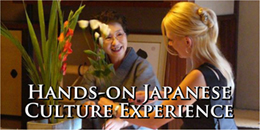
- Travel Tips
Kyoto Travel Guide: Sightseeing, Food, Accommodation, and More in Japan’s Ancient Capital

- tsunagu Japan
Kyoto was the capital of Japan for more than 1,000 years, and is naturally full of historical attractions alongside a plethora of fantastic restaurants, shops, and nature. But with so much on offer, planning a Kyoto itinerary can be overwhelming, which is why it’s best to start at the basics. In this Kyoto guide, we’ll introduce everything you need to know about Kyoto’s history, climate, attractions, events, food, accommodation, transportation, and more. So, before you start writing up a list of places to visit in Kyoto, read this article to ensure yourself a smooth and stress-free Kyoto sightseeing experience!

This post may contain affiliate links. If you buy through them, we may earn a commission at no additional cost to you.
Introduction to Kyoto
Kyoto is located in the Kansai region of western Japan, around 2.5 hours from Tokyo , and about 30 minutes by train from Osaka . Around 2.5 million people live in Kyoto Prefecture. This area is a popular tourist destination thanks to its many sightseeing attractions that offer a sense of Japan's history and culture.
Kyoto was the previous capital city of Japan before it was relocated to Tokyo. Kyoto became the capital of Japan when Emperor Kanmu moved it from Nara to what is now the Kyoto city area in the year of 794. Named Heian-kyo, Kyoto flourished as Japan's capital city for over a thousand years.
With this historical background, Kyoto saw the development of shrines, temples, historical buildings, and unique traditional arts and crafts, all of which shaped Kyoto's elegant cityscape and culture.
Historical shrines, temples, and streetscapes lined with stores that have been in business for hundreds of years remain to this day in areas like Higashiyama, located in the east part of the Kyoto city center, and Arashiyama to the city's west.
Our Top Tips
JR Pass for Whole Japan
Explore Japan in the most convenient and economical way with a Japan Rail Pass! It is valid for the majority of railways and local buses operated by JR.
Kyoto Prefecture has many other historical and natural sights to see, including Fushimi, one of Japan's three major sake brewing areas; Uji, which is famous for its high-quality Uji tea; Miyama, a village with historical thatched buildings; and Amanohashidate, a sand bridge known as one of Japan's three top views. You can also enjoy shopping and dining in the Kawaramachi area in the Kyoto city center, and Gion, Kyoto's geisha district.
・Where is Kyoto Located?
Kyoto Prefecture is located in an area called Kansai in western Japan, on the island of Honshu. The north area faces the Sea of Japan, and its capital is the city of Kyoto. Neighboring prefectures include Osaka and Nagoya, both of which can be visited in merely an hour by train.
The gateway to this splendidly gorgeous prefecture for most tourists is Kyoto Station, one of the largest train stations in Japan. To try to fit a guide for the station in this article would be doing the station a disservice. Instead, we've decided to make a separate article for it! Before you visit, check out our guide to this beautiful station here , so you can hit the ground running when you arrive.
Weather in Kyoto
・climate and rainfall.
Kyoto City, which is a particular hotspot for sightseeing, is located in a basin surrounded by the Hiyashiyama, Kitayama, and Nishiyama mountains. While Kyoto's rainy summer and dry winters are similar to the climate of the Setouchi Region, the mountains surrounding the city on three sides gives the city an inland climate with a wide variation in temperatures. The basin geography also means that the winds in Kyoto are typically mild.
This makes the seasons in Kyoto quite distinct. As summer approaches, Kyoto can see heat waves with extremely high humidity and temperatures of over 35℃. If you are visiting in summer, be sure to plan ahead for the heat. On the other hand, Kyoto's winters can be bone-chillingly cold. You may feel particularly cold when visiting Kyoto's shrines and temples as cold draughts can sometimes come through the wooden floors and sliding doors, so be sure to dress accordingly.
Main Sightseeing Areas in Kyoto
Kyoto is full of attractive spots that blend the old and new, including historical buildings and streetscapes, gorgeous natural scenery, and shops and buildings built in a modern Japanese style. Here are some of the popular spots you shouldn't miss while you're in Kyoto.
1. For a Sense of History: Higashiyama and Gion
Higashiyama, located in the east side of the Kyoto city center, is one of Kyoto's most popular areas. Here you'll find many notable shrines and temples, including Kiyomizu Temple with a stage that juts from the mountain; Kennin Temple, Japan's oldest Zen temple; and Yasaka Shrine, which annually holds the Gion Matsuri, one of Japan's three major festivals. Elegant stone-paved streets lined with souvenir stores and restaurants such as Ninen-zaka, Sannen-zaka, and Hanami-koji Street are also popular areas to experience Kyoto's unique atmosphere. One charm of the Higashiyama area is that, if you're lucky, you may catch sight of maiko, or apprentice geisha, in the area.
2. For Natural Beauty: Arashiyama
If you want to take in the seasons in a uniquely Japanese atmosphere, make sure to visit Arashiyama. Located to the west of Kyoto City, Arashiyama has been designated as a historical site and Place of Scenic Beauty by the Japanese government. Its spring cherry trees and autumn leaves beautifully color the mountain slopes here.
Togetsu Bridge over the Katsura River that runs through the center of Arashiyama and the 400-meter path through the bamboo forest here are symbols of Arashiyama, and draw many visitors.
There are plenty of other ways to enjoy Japan's natural beauty and culture in Arashiyama. Tenryu-ji Temple is known for its gardens designed to incorporate its large pond and the surrounding natural scenery. Other activities include the Sagano Scenic Railway, which runs from Torokko Saga Station to Torokko Kameoka Station, and the Hozugawa River Boat Ride, a thrilling 16km boat ride down the river that runs through the valley from Kameoka to Arashiyama.
3. For Shopping and Dining: Kawaramachi
Kyoto's main shopping area is known as Kawaramachi. Here you'll find a wide range of restaurants and places to shop.
Nishiki Market is an arcade with around 1300 years of history. Today, you'll find around 130 stores here. Known by locals and visitors alike as "Kyoto's kitchen", Nishiki Market is stocked with a wide range of groceries and street food including fish, local vegetables, tofu and yuba (tofu skin), and Kyoto-style pickles.
On the west bank of the Kamogawa River is Ponto-cho, a narrow stone-paved laneway lined with traditional townhouses, called machiya, and Japanese style restaurants. In the evenings, plover-patterned lanterns illuminate the street, lending it an even more elegant atmosphere.
The Kawaramachi area also has souvenir and fashion stores, restaurants, bars and gaming arcades, making this a modern area where you can enjoy shopping, dining, entertainment and more!
This, of course, is only the tip of the iceberg. Have a look at this list if you need more inspiration for sightseeing spots around Kyoto on your trip.

Kyoto Gourmet Guide
Kyoto's food scene is full of restaurants that offer high-quality cuisine carefully made from seasonal ingredients. Unfortunately, this comes at a cost: long-running traditional Japanese restaurants often require advance reservations, and there are many restaurants, particularly in Gion, where dinners can cost 10,000 yen or more. However, if you visit for lunch, it's possible to experience Kyoto-style cuisine at one of these famous restaurants for around 3,000 - 7,000 yen.
Kyoto specialties you should make a point to try when you're visiting include yudofu (tofu hot pot), made with tofu simmered in a kelp broth and paired with soy sauce or other sauces, and yuba. Other famous dishes include mackerel sushi and obanzai, a type of traditional home-style cooking that is very familiar to Kyoto families.
Of course, you can't miss trying Kyoto's matcha (powdered green tea) during your visit! Matcha is delicious to drink with traditional Japanese sweets, and also goes great in parfaits, ice cream, and baked sweets.
Uji in Kyoto is famous for being the leading tea-producing area of Japan. There are many shops in Kyoto where you can try foods and drinks made with Uji matcha, so be sure to give it a try.
Yatsuhashi and its variation, nama-yatsuhashi, are famous local Kyoto sweets. Yatsuhashi is made from steamed rice flour blended with sugar and cinnamon, and is baked in the shape of a traditional Japanese instrument called a koto. Nama-yatsuhashi is made with the same dough, but instead of baking, it's filled with bean paste and folded in a triangle shape.
Kyoto's main dining areas are concentrated within the city, and highlights include Ponto-cho , which is located on the west bank of the Kamogawa River (from Sanjo Street to Shijo Street), and Nishiki Market, which sells fresh ingredients and prepared foods unique to Kyoto. Gion is known for its high-end Japanese restaurants and traditional sweet shops, while the Kyoto Station area has underground shopping areas with plenty of places to eat and drink.
While you'll find many restaurants within the city open until late night, please be aware that restaurants in sightseeing areas like Uji and Fushimi often close earlier in the evenings.
Kyoto Shopping Guide
There are some striking differences between the types of products sold in different areas of Kyoto. When shopping in Kyoto, it's best to decide what area to visit based on the type of products you're looking to buy.
Kyoto's popular shopping areas like Kawaramachi and the Kyoto Station area have plenty of Kyoto souvenirs as well as fashion and department stores that stock the latest trends. Kyoto's big two sightseeing areas, Higashiyama and Arashiyama, have plenty of souvenir stores that sell traditional handicrafts, as well as items like Japanese-style accessories and sweets, so you can enjoy some shopping on your way to different sightseeing areas.
Gojo-zaka, nicknamed "Teacup Hill", is located close to Kiyomizu Temple. Here there are many potters that create Kyoto's unique Kiyomizu-yaki ceramics, and shops that sell their works.
The area at the east bank of the Kamogawa River between Sanjo and Shijo Streets is famous as a shopping area for antiques like ceramics and furniture. This area is not just famous within Japan! There are many antique lovers who come from overseas to shop here.
The Kyoto Museum of Traditional Arts Fureaikan, located near Heian Shrine, has a wide range of traditional Kyoto handicrafts that range from high-quality pieces to more affordable items. You're sure to have a wonderful time simply browsing these skillfully-crafted works.
If you're looking to efficiently shop for famous Kyoto products, then the basement food floors at the department stores in the Shijo Kawaramachi and Kyoto Station areas are the perfect choice. These stores have everything from traditional, long-running stores to up-and-coming patisseries all grouped on one floor, so you can compare all their offerings as you make your selections.
But of course, if all you want is to find some of the best souvenirs here, we've got you covered !
Events in Kyoto
There are many traditional and historical events held in Kyoto, and it's a great idea to come along to some while you're visiting. You'll be sure to connect with Kyoto's history and the people who live here. Here are a selection of the most important events in each season.
・Spring (March, April, May)
Spring in Japan means one thing: cherry blossoms! Cherry blossom season typically falls from late March to mid-April, and during this time Kyoto welcomes visitors from within Japan and all over the world.
There are many cherry blossom spots in Kyoto. Highlights include the Keage Incline, where around 90 cherry blossom trees bloom along a disused railway track, and the Philosopher's Path, a tree-lined path that runs along the Lake Biwa canal. Maruyama Park has large weeping cherry trees that are illuminated at night, while Ninna-ji Temple is known for its late-blooming cherry blossoms. Another famous sight is the Sakura Tunnel, a 200m section on the Randen Kitano line where the train passes through dense cherry trees between Narutaki Station and Utano Station. If that wasn't enough, here is a whole slew of other places for admiring flowers!
One of Kyoto's three major festivals, the Ao Matsuri (Hollyhock Festival) is held on May 15th (or May 16th in the case of bad weather). In this festival, a procession of 500 people adorned with hollyhock flowers and dressed in reproductions of traditional clothing from the Heian era parade from the Kyoto Imperial Palace to the Shimogamo and Kamigamo Shrines. You'll also see horses, ox carriages, large shades decorated with irises and peonies, and a portable shrine which holds the Saiodai, a local Kyoto woman chosen each year for the festival. The colorful and elegant procession makes for a gorgeous sight.
・Summer (June, July, August)
Every year from May 1st to September 30th, you can see a Kyoto summer highlight called kawayuka or (river floors). Kawayuka are terrace-like structures where meals are served. They often have straw mat flooring to sit on, and are built either over rivers or on the banks with views over the water. You can find kawayuka at a number of rivers in Kyoto, including the Kamogawa riverbanks and on the rivers of Kibune and Takao. The number of restaurants serving meals on kawayuka are increasing, so today you can enjoy not just kaiseki and Kyoto-style cuisine, but Italian, Chinese, and even yakiniku (Japanese BBQ) in this style. More and more restaurants are also offering kawayuka with table seating, too.
Of course, worthy of special mention is the Gion Matsuri, a festival considered not just one of the major three Kyoto festivals, but one of the major three in all of Japan. First held in the Heian era to pray for the end of a plague, this festival is run by Yasaka Shrine, and consists of a range of events through the month of July.
The Yamaboko Junko float parade held on the 17th and the 24th of July is also a must-see. A mikoshi (portable shrine) from Yasaka Shrine and 33 floats parade through the Shijo Karasuma, Shijo Kawaramachi, Kawaramachi Oike, and Karasuma Oike areas. Each float has their own characteristics, and the beauty of their embroidery and decorations has earned them the nickname of "portable art galleries". The Kyoto Gion Matsuri Yamaboko Junko parade has also been designated as a UNESCO Intangible Cultural Property.
・Autumn (September, October, November)
In the Heian era, moon-viewing parties and boating were popular among the aristocracy during the mid-autumn harvest moon. The exact date of the harvest moon changes each year, but it falls around mid-September to early October. Even today, there are events that celebrate the harvest moon on autumn evenings all over Kyoto.
The most famous is the Kangetsu no Yube (Moon Viewing Evening) held at Daikaku-ji Temple in the Arashiyama area. On three mid-autumn evenings around the harvest moon, you can take in the beautiful sight of the autumn moon during a 15 to 20-minute boat ride on the large pond in the Daikaku-ji garden. There are two types of decorative boats used for this event: ryutosen, or dragon-head boats, and gekishusen, headed with a mythological Chinese waterbird. This elegant event allows participants to take in the sight of the moon and the natural beauty of the garden's pond.
The final of the three major Kyoto festivals is the Jidai Matsuri, or Festival of the Ages, held at the beginning of October. This festival, held by Heian Shrine, features a procession of 2,000 townspeople dressed in styles from different historical periods who parade from Kyoto's Imperial Palace to Heian Shrine. Clothing, hairstyle, and ritual goods from each period are recreated for the parade, and some participants will even dress as famous historical figures such as feudal lord Oda Nobunaga and Murasaki Shikibu, author of The Tale of Genji. This beautiful parade is sometimes called a "living picture scroll".
Kyoto is known for cherishing the natural beauty of each season, and there are also many famous spots where you can take in a view of the autumn foliage. Some highlights include the Jisou-in Temple with its "maple floor", where the vermilion leaves are mirrored on reflective polished flooring, and Eikando Temple, where leaves from over 3,000 autumn trees cover the gardens. Walking the grounds of Tofuku-ji Temple in the fall feels like strolling through a sea of autumn-colored clouds. There is also a 250m section of the Eizan Electric Railway line between Ichihara Station and Ninose Station where approximately 280 maple trees form what is called the "Maple Tunnel". The sightseeing train Kirara with seats that face its large windows offers an amazing view of these autumn colors.
While the exact dates the leaves change to red and yellow vary from year to year, typically the autumn leaf season in Kyoto is from early November to early December. If you're planning a trip to Kyoto around this time, make sure to include some autumn foliage spots in your trip.
・Winter (December, January, February)
From late November to early December, many temples hold an event called Daikon-daki, or Daikon Radish Cooking, to pray for health and prevention of illnesses. Each year on the 7th and 8th of December, Senbon Shakado (also known as Daihoon-ji Temple) serves flavored boiled daikon radish (1,000 yen). Origins of this custom vary from temple to temple, but at Senbon Shakado, Sanskrit characters were once written on sections of radish as a ward against evil spirits. Even today, these characters are written on the radish, which are prayed over before being sliced and cooked.
At Ryotoku-ji Temple, around 3,000 radishes are cooked and served to worshippers on the 9th and 10th of December. The radish served here is also known for the agedofu (deep-fried tofu slices) added to it.
Kyoto has some impressive New Year's events, too. Chion-in Temple's Joya no Kane ceremony, where the temple bell is rung 108 times to ring in the new year, takes a team of 17 monks working together to pull the ropes. The bell is rung 108 times because in Buddhism, this is said to be the number of kleshas, or emotional states that cause suffering. The striking of the bell is said to cast out the year's kleshas so that worshippers can start the new year with a pure mind. Many people gather each year to watch this show of strength. Gates open for worshippers at the shrine at 8:00 pm on New Year's Eve, but the bell ringing itself starts at 10:40 pm and goes until 12:20 am. People do start to line up to see this ceremony as early as around 7:00 pm, so it's best to come early.
Hatsumode is the name for the first shrine or temple visit of the new year, and it's a chance to offer thanks for the year that has passed and pray for safety and peace in the coming year. Countless people come to Kyoto each year for their hatsumode at the shrines and temples here. Popular locations are Heian Shrine and Fushimi Inari Shrine, which is famous for its thousand torii gates and its blessings for harvests and business. World Heritage sites Kamigamo and Shimogamo Shrines are also popular destinations. Many visitors also take this chance to buy a written fortune, called o-mikuji, which foretells their fortune for the coming year.
Have a look at some of the other big events in Kyoto and see if any of them intrigue you, as any one of these events would make for a memorable trip!
How to Get to Kyoto
Kyoto is located beside Osaka Prefecture, which has two airports: Kansai International Airport and Osaka International Airport (also known as Itami Airport). Limousine buses that go directly to Kyoto run from both of these airports, and bullet trains also stop at Kyoto Station, so Kyoto is easy to get to whether you're coming from inside Japan or from overseas.
Traveling Within Kyoto
Kyoto's subway network is underdeveloped in comparison to Tokyo or Osaka. This is because Kyoto's long history means that land must be surveyed for any buried cultural artefacts before any tunnels can be built. Large scale developments are also avoided in order to protect the town's scenery, which means many narrow streets and one-way lanes remain as they did in the past. While many of Kyoto's main sightseeing areas are concentrated within the city, these factors mean that you will likely need to use both trains and buses to get around. Make sure you plan the right transport so that your trip goes as smoothly as it can!
If there is a train station close to where you're going, this is usually the most convenient option. Trains aren't impacted by traffic conditions which can make for an easier trip. The main lines in Kyoto are the Kyoto Municipal Subway, JR, Keihan Electric Railway, Hankyu Railway, and Kintetsu Railway.
While the Kyoto Municipal Subway's standard fare of 210 yen is a little high in comparison to Tokyo or Osaka, you can take advantage of a number of discount passes. These include the Subway One-Day Pass (600 yen for adults, 300 yen for children) and the Bus & Subway One-Day Pass that includes the subway, City Bus, Kyoto Bus, and Keihan Bus.
There are three particular routes that are recommended for being a sightseeing activity in and of themselves. The Eizan Railway, which covers the route from Demachiyanagi to Kurama and Mt Hiei, has become popular with tourists for their sightseeing trains that offer views of tunnels of autumn leaves and other beautiful scenery. The Randen tram (Keifuku Electric Railroad) from Shijo Omiya to Arashiyama is loved by locals for being Kyoto's only tram line. The Sagano Scenic Railway that goes between Kameoka and Arashiyama gives a view of the changing seasonal landscape of the Hozugawa riverside and valley, and is particularly popular in the cherry blossom and autumn leaf seasons.
Kyoto City Official Travel Guide: Subways and Trains
The Kyoto bus system is complicated, and many travelers find it hard to know what bus they should catch. We've put together a few links below that you can use to plan your route in advance.
Kyoto City Bus has a flat fee ticket system for all stops (with some exceptions). Tickets cost 230 yen for adults and 120 yen for children. To use a Kyoto City Bus, board the bus from the back door. Once your bus passes the stop before the one you want to get off at, press the buzzer, and then pay your fare with an IC card or cash at the box by the driver's seat, and get off the bus at the front door.
Buses in Kyoto can fill up and have delays on the more popular sightseeing routes and during busy seasons, so if you're traveling by bus, be sure to factor in a little extra travel time just in case.
City Bus & Subway Route Map
- Simplified Chinese
- Traditional Chinese
Bus and Train Veteran (Route Planner)
* Child tickets are valid for children 6 to 11 years of age. (12 year olds will be counted as a child if still attending elementary school.)
Taxis are recommended if you're looking to easily navigate Kyoto's narrow and one-way streets. Many drivers are well versed in the area, so they can take both time and location into account to come up with the best route. The initial fare within Kyoto City is 450 yen. If you're traveling in a group, a taxi can sometimes work out to be more economical than a bus or train.
Foreign Friendly Taxis, which prioritize international tourists, are recommended if you're looking to get around Kyoto by taxi. They cost the same as regular taxis, but the drivers have undergone training in foreign languages and customer service. These taxis also accept credit cards and IC travel cards. Foreign Friendly Taxi stands are located at the taxi stands by JR Kyoto Station's Karasuma and Hachijo Exits.
Guide: Foreign Friendly Taxi
・Car Rentals
If you have an international driving license, a rental car is a good option for times when you want to travel without worrying about set schedules or public transport coverage.
Public transport in Kyoto is affordable and convenient, but if you're traveling outside the city area or are in a group, a rental car can work out to be less expensive. However, when driving in Japan, please pay extra attention, especially at intersections where accidents often occur.
It's a good idea to avoid driving in busy times like Golden Week (late April to early May), Obon (mid-August), and the year-end holidays, as traffic jams that can extend tens of kilometers are not uncommon.

・Bike Rentals
Bike rentals are the perfect way to go at your own pace while taking in the sights of the Kamogawa River or Kyoto's charming streetscapes, especially in the milder spring and autumn weather. Since you can stop to take in whatever sights catch your eye, you can enjoy your time in Kyoto just like a local.
Do be aware that, as a general rule, street parking is banned and can result in your bike being seized. You can park your bike at store parking areas or public bike parking lots. Also keep in mind that Kyoto City slopes from north to south, so traveling long distances uphill from south to north by bike can be very tiring and is best avoided.
Kyoto City Cycle Site
- Other languages (Road rules, parking information, bike shop directory)
Travel by rickshaw is a very Kyoto-style way of getting around while taking in the sights. These carriages are pulled by people with the riders sitting in the back. You'll find rickshaw drivers working in the Higashiyama and Arashiyama areas, so if you see one, why not say hello and take a ride? The fares vary from company to company, but as a guide, a 30-minute ride costs around 7,000 yen for a solo rider, 9,000 yen for two people, and 13,500 for three people (in two carriages).
Kyoto Accommodation Guide
The rush to build more accommodation in Kyoto is continuing as the numbers of tourists increase. While this construction is alleviating issues the city has had in past years with accommodation availability, popular hotels continue to quickly book out, so it's best to make reservations early. Many visitors choose to stay in the Kawaramachi and Kyoto Station areas for their convenient transport options, as well as in the Higashiyama area for its wealth of tourist attractions.
If you want to relax and enjoy a little peace and quiet away from the crowds, the popular tourist areas of Arashiyama, Kibune, and Kurama are also recommended. While these spots have less nightlife to enjoy, accommodations are more likely to have hot springs, and are a great place to unwind surrounded by natural beauty.
You can look for accommodations by area or by your budget and requirements. As a major international tourist destination, you're bound to find accommodation that suits you in Kyoto.
Japanese hotels generally cost around 8,000 - 20,000 yen per person, per night. Most of them have concierges that can give you detailed local information about how to get around and where to eat. Recently, more of these concierge services are offered in different languages, so make a point to take advantage if you can. Another advantage to hotels is that there are a wide range of options that can meet your requirements and budget.
Stays at a ryokan (Japanese-style inns) typically fall in the 10,000 - 20,000 yen per person per night range. The exact range of services available will vary, but these are a good choice for anyone wanting to enjoy the local culture with tatami mats, yukata robes, hot springs, and Japanese gardens and architecture. The charm of a stay at a ryokan is that you can experience a sense of Japanese style in everything from the traditional in-room dining to seasonal Japanese decorations. If the ryokan has a public bath, you can unwind and relax while soaking in the bath during your stay as well. Here is a list of our favorites to get you started!
・Business Hotels
If you're looking to keep costs down, try staying at a business hotel. These hotels range from 6,000 - 10,000 yen per person per night, which works out to be a more affordable option than standard hotels or ryokan. The reason these hotels are cheaper is that they tend to provide more simple furniture, electronics, and amenities for your stay.
Since this type of hotel was originally developed for business travelers, they're often found in great locations close to train stations. The wealth of affordable, clean, and comfortable options has made this style of hotel more and more popular with international tourists in recent years, too.
・Capsule Hotels
A uniquely Japanese style of hotel worth experiencing is the capsule hotel, which range from 2,500 - 5,000 yen per person per night. These hotels provide just enough space for one person to sleep, and originally were developed as a place for office workers to stay if they missed the last train home.
Recently, they have become popular with tourists who are looking for affordable accommodation and a uniquely Japanese experience. Today, many "next generation" capsule hotels with stylish designs and plenty of amenities are being built. Once simple hotels that focused mainly on affordability, these new capsule hotels take pride in their style and comfort.
・Guest Houses
Guest houses are a popular choice among backpackers. Prices range from between 3,000 - 7,000 per person per night. They're not just affordable; they also offer communal spaces where you can get to know other travelers and locals. Guest houses with linked cafes and bars are becoming common, so you can experience real local hospitality while you chat with the owner or local customers.
* Stated price estimates may vary in busy periods.
Kyoto Tourist Information Centers
If you've lost your way or need help finding your destination, tourist information centers can help. There are many tourist information centers around, but we recommend going to ones that have received JNTO authorization. JNTO stands for the Japanese National Tourist Bureau, who categorizes tourist information centers using factors like location or function.
Here are three selections among the tourist information centers in Kyoto. All of these can handle enquiries in English, and some also offer support in other languages too. On top of that, they are conveniently located in areas that see many international visitors.
Take advantage of the tourist information centers here and you're sure to have a pleasant trip!
・Kyoto Tourist Information Center (Kyoto Station)
This center is a joint tourist information center for both Kyoto City and the wider Kyoto Prefecture. It provides advice about sightseeing and accommodation in Kyoto Prefecture, and also offers a range of other services including ticket sales.
Kyoto Tourist Information Center
- Other languages
・Kawaramachi Sanjo Tourist Information Center (Kawaramachi)
This center offers English language advice and information about sightseeing in the area, and also sells tickets for sightseeing attractions. The linked Gurunavi Information Center not only provides information about dining options, but it also has multipurpose spaces that can be used for anything, including nursing babies and praying.
Kawaramachi Sanjo Tourist Information Center (Multi-language webpage)
・Kokoka Kyoto International Community House (Keage)
Kokoka is located in the Okazaki area near attractions like Heian Shrine and Nanzen-ji Temple. With services that include a communal lobby, library, restaurant, and message corner (a space for distributing flyers), this center offers a wide range of information for not just tourists but the international community that live in Kyoto as well. Their official website provides information for help in emergencies or natural disasters, as well as guides for life in Japan, so this is a recommended page to bookmark just in case.
Kokoka Kyoto International Community House
Kyoto Emergency Information
・doctors and hospitals.
If you fall sick or suffer an injury while in Kyoto, please consult the website below. On this site, you can search a database of over 900 medical facilities that accept international patients nationwide. The downloadable PDF guide to using medical facilities provides information on how to access medical help, a bilingual chart you can use to explain your symptoms, and a guide to help you in the case of earthquakes or other disasters.
Japan Tourism Agency: Guide for When You Are Feeling Ill
・Police Stations
If you lose something, get lost, or are the victim of a crime, visit a nearby koban (police box) or police station. The below website has answers to common questions about lost property, as well as emergency numbers for police stations in Kyoto Prefecture. Giving this information a read beforehand means you can enjoy your travels in Kyoto with peace of mind.
Kyoto Prefectural Police Information Guide
Downloadable PDF Guide: Information for Foreign Tourists [Crime Prevention and Bicycle Rules]
・Information for Muslim Travelers
Please consult the below website for information about Muslim friendly restaurants. You can refine your search by keyword, area, and type of food, so you're sure to find just what you're looking for.
Halal Gourmet Japan
Traveling from Kyoto
Whether by bullet train, plane, or bus, there are many ways to get to other major sightseeing areas in Japan including Hokkaido, Tokyo, Osaka, Fukuoka, and Okinawa. Research the best option for your budget and destination to travel efficiently and comfortably in Japan.
・ Bullet Train (Shinkansen) The Japan Rail Pass offers unlimited use of the entire JR rail and bus network, including travel by bullet train, which makes it great value. This pass comes with either a 7 day (29,100 yen) or 14 day (46,390 yen) validity. You can find our guide here to help you pick the right pass.
・ Airplane Depending on where you're going, travel by plane can be a faster way to cover long distances.
It takes around an hour and a half from Kyoto Station to Kansai International Airport by train. These trains depart approximately every 30 minutes and cost 2,250 yen each way. Limousine buses to Osaka International Airport (Itami Airport) take around 50 minutes and cost 1,310 yen. These buses leave around every 20 minutes, so their price, speed, and frequency make them a very convenient option.
One appeal of Japanese airlines is that you can experience Japan's unique level of hospitality. There are a lot of low-cost airlines emerging recently which allow you to get to another city quickly and affordably. At certain times of the year, morning and late-night flights from airports in the nearby Osaka can be as low as 5,000 yen return to Tokyo and Hokkaido!
・ Express Bus Express buses are a good option if you don't want to spend too much on travel. They take longer than bullet train or plane, but fares can cost less than half the price of a bullet train ticket, so it's possible to travel for only a few thousand yen. At the cheapest times, it's even possible to get from Kyoto to Tokyo for as low as 1,500 yen. Taking the night bus means you can sleep while you travel, so definitely consider this option if you're looking to save money and make efficient use of your time as well. Enjoying local foods during breaks at service areas during your trip are also a fun aspect of traveling by express bus.
* All prices shown above fluctuate depending on the time and date of actual purchase.
Japan Shinkansen, Narita Express (N'EX) & Express Train Tickets
Plan ahead by booking your shinkansen, airport train, and express train tickets online in English. Have the tickets sent to you by mail or collect them at the station once you're in Japan.
・Kyoto to Hokkaido (Hakodate Station)
Bullet train: Approximately 7 hours 20 minutes (Tokaido Shinkansen from Kyoto Station → Tokyo Station → Shin Hakodate Hokuto Station → Hakodate Station) Plane: Approximately 3 hours 50 minutes (Kyoto Station → Osaka International Airport → Hakodate Airport → Hakodate Station)
・Kyoto to Tokyo (Tokyo Station)
Bullet train: Approximately 2 hours 20 minutes (Kyoto Station → Tokyo Station) Express bus: Approximately 7 hours (Kyoto Station Hachijo Exit → Tokyo bus terminals)
・Kyoto to Osaka (Shin-Osaka Station)
Train: Approximately 25 minutes (Kyoto Station → Shin-Osaka Station)
・Kyoto to Fukuoka (Hakata Station)
Bullet train: Approximately 2 hours 50 minutes (Kyoto Station → Hakata Station) Plane: Approximately 3 hours 20 minutes (Kyoto Station → Osaka International Airport → Fukuoka Airport → Hakata Station)
・Kyoto to Okinawa (Naha Airport)
Plane: Approximately 4 hours 20 minutes (Kyoto Station → Kansai International Airport → Naha Airport)
* These estimates are minimum travel times. Actual times may vary depending on the time of day and traffic conditions.
Kyoto is welcoming more and more international tourists every year. Please refer to the information in this guide to help make your trip easier, more pleasant, and more affordable!
(Also, did you know that Kyoto is surrounded by other beautiful areas that you can easily reach by train? For instance, there's Osaka, a popular tourist destination with affordable dining options and a wealth of shopping areas. Nara offers abundant nature and historical streetscapes, and there's the sophisticated port town of Kobe in the neighboring Hyogo Prefecture. Consider adding them to your travel itinerary, too!)
If you want to give feedback on any of our articles, you have an idea that you'd really like to see come to life, or you just have a question on Japan, hit us up on our Facebook , Twitter , or Instagram !
Note: All information is accurate at the time of publishing.

The information in this article is accurate at the time of publication.
tsunagu Japan Newsletter
Subscribe to our free newsletter and we'll show you the best Japan has to offer!

- bullet train
- kawaramachi
- higashiyama
About the author
Related Articles
Related interests.
- Traveling with Kids
- Rules & Laws
- Climate & Seasons
- Transportation
- Traveling alone
- Manners & ettiquette
- Pocket wifi & hotspots
- Smoking & Drinking
- Travel itineraries
- Currency & money
- Japan on a budget
Restaurant Search
Subscribe to the tsunagu Japan Newsletter
Sign up to our free newsletter to discover the best Japan has to offer.
Connect with Japan through tsunagu Japan
Let us introduce you to the best of Japan through our free newsletter: sightseeing spots, delicious food, deep culture, best places to stay, and more!
- Skip to main content
- Skip to primary sidebar

Destinations
- Plan Your Trip
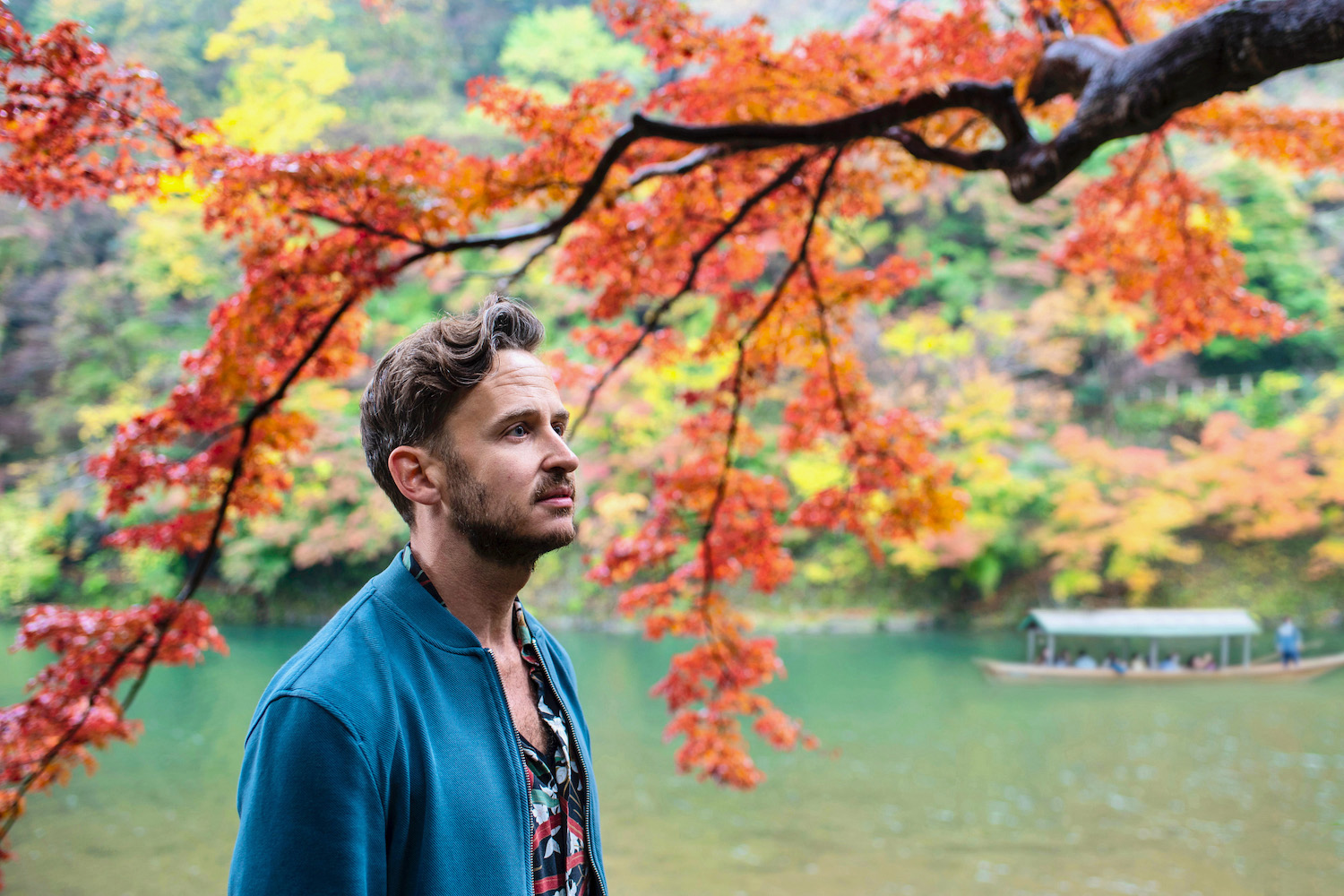
Kyoto Starts Here
When I first decided to tackle a round-up of things to do in Kyoto , I felt intimidated. Japan’s ancient capital, after all, is home to literally thousands of years of history, to say nothing its limitless contemporary appeal.
Now, as I take a second (which is to say new-and-improved) stab at a Kyoto itinerary, I’m as attuned to the fine details that make every moment spent here indispensable as I am mindful of how important it is to keep things concise. The goal of your Kyoto trip should be illumination, not domination, regardless of how long you expect to stay here, or how deep you plan to dig.
In line with this, I’ll be expounding upon my thoughts about how many days in Kyoto you should spend after talking you through my favorite Kyoto attractions and activities. No matter when you end up visiting Japan, I hope my Kyoto travel guide inspires you.
Where to Stay in Kyoto
Before I introduce you to things to do in Kyoto in a more thorough way, it’s helpful to discuss where you should set up shop. In general, I am of two minds when it comes to addressing this matter. On one hand, there’s value to staying in the heart of Higashiyama, particularly if it’s your first trip to Kyoto, and especially if you can afford a luxurious ryokan such as Seikoro Ryokan , or even a modest one like Ryokan Uemura .
On the other hand, not all the best ryokans in Kyoto are in Higashiyama, nor are they expensive. Ryokan Kyoraku , which is just 15 minutes by foot from Kyoto Station, perfectly illustrates this. There’s also a case to be made for staying in city hotels along Karasuma-dori, such as Hotel Resol Kyoto Kawaramachi or Mitsui Garden Hotel Kyoto Sanjo , whether to save money, avoid crowds or simply for the utility of public transportation in that area.
How to Divide Up Your Trip to Kyoto
Get lost in kyoto’s historic center.
Want to see the best temples in Kyoto ? While some lie outside of Higashiyama (namely the Golden Pavilion of Kinkaku-ji in Kita ward), the vast majority can be seen by following what I call the “temple trail.” After starting way up north at the Silver Pavilion of Ginkaku-ji , walk down the Philosopher’s Path to Nanzen-ji and Eikando , veering off slightly to visit Hei-an Shrine before continuing past Chion-in and Kodai-ji into Maruyama Park . This will allow you to walk up Ninenzaka slope to reach Kiyomizu-dera for sunset, and back down it to look for Geisha in Gion after nightfall.
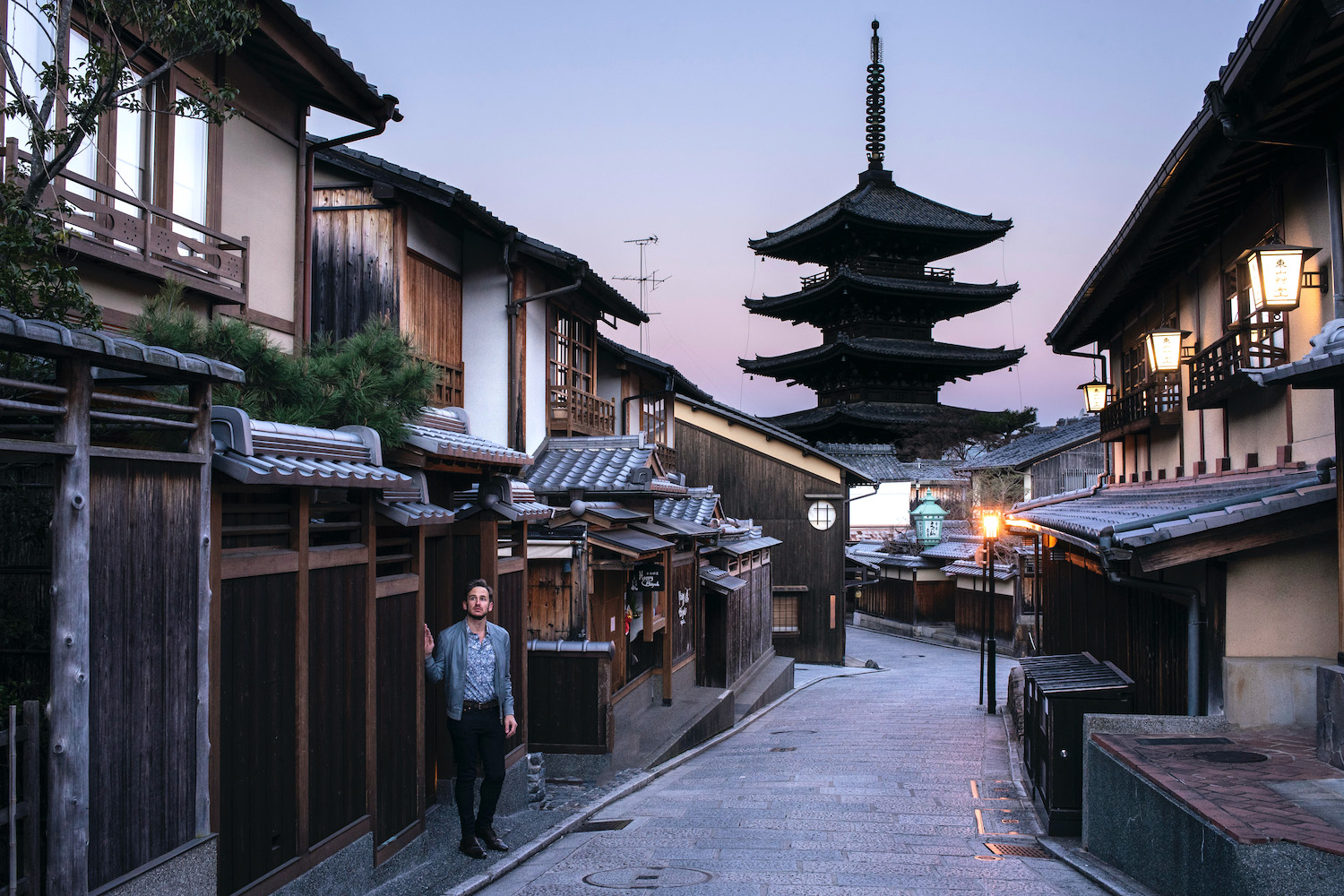
Whatever you do, make sure not to skip the west side of the Kamo River , where you’ll find the Shimogyo and Nagakyo wards. These areas are home not only to well-known sites such as Nijo Castle and the Kyoto Imperial Palace, but also Nishiki Market , which is known as the “Kitchen of Kyoto.” Beyond these, plenty of small, historic streets to get lost within, whether you’re on the hunt for forlorn temples or just want to see beautiful examples of iconic Machiya houses.
Explore Arashiyama beyond the bamboo forest
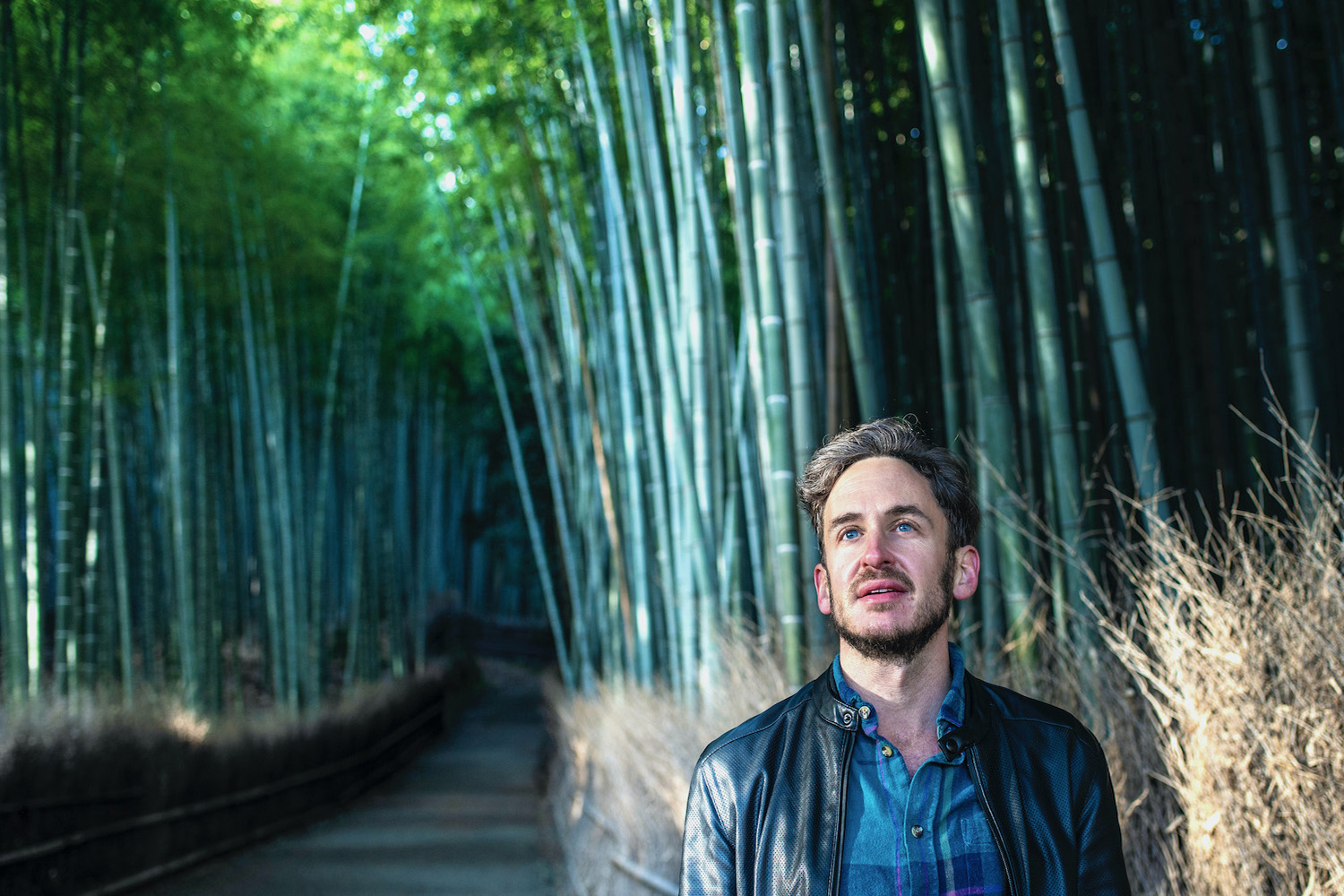
Temples are among my favorite things to do in Kyoto, but they’re not the only game in town. On the other hand, while Sagano Bamboo Grove , Iwatayama Park and the lush banks of the Hozu River make Arashiyama a paradise for nature lovers, there’s plenty of culture here as well. Have a cup of matcha amid the well-manicured private garden of Okochi-sanso Villa , or enter the bamboo forest through Tenryu-ji , another example of a Kyoto temple outside of Higashiyama that it very much worth visiting. Remember the Kinkaku-ji, the Golden Pavilion? You can visit on on your way back to Kyoto, by stopping at Emmachi station.
Chase a Fushimi Inari hike with a sake tour
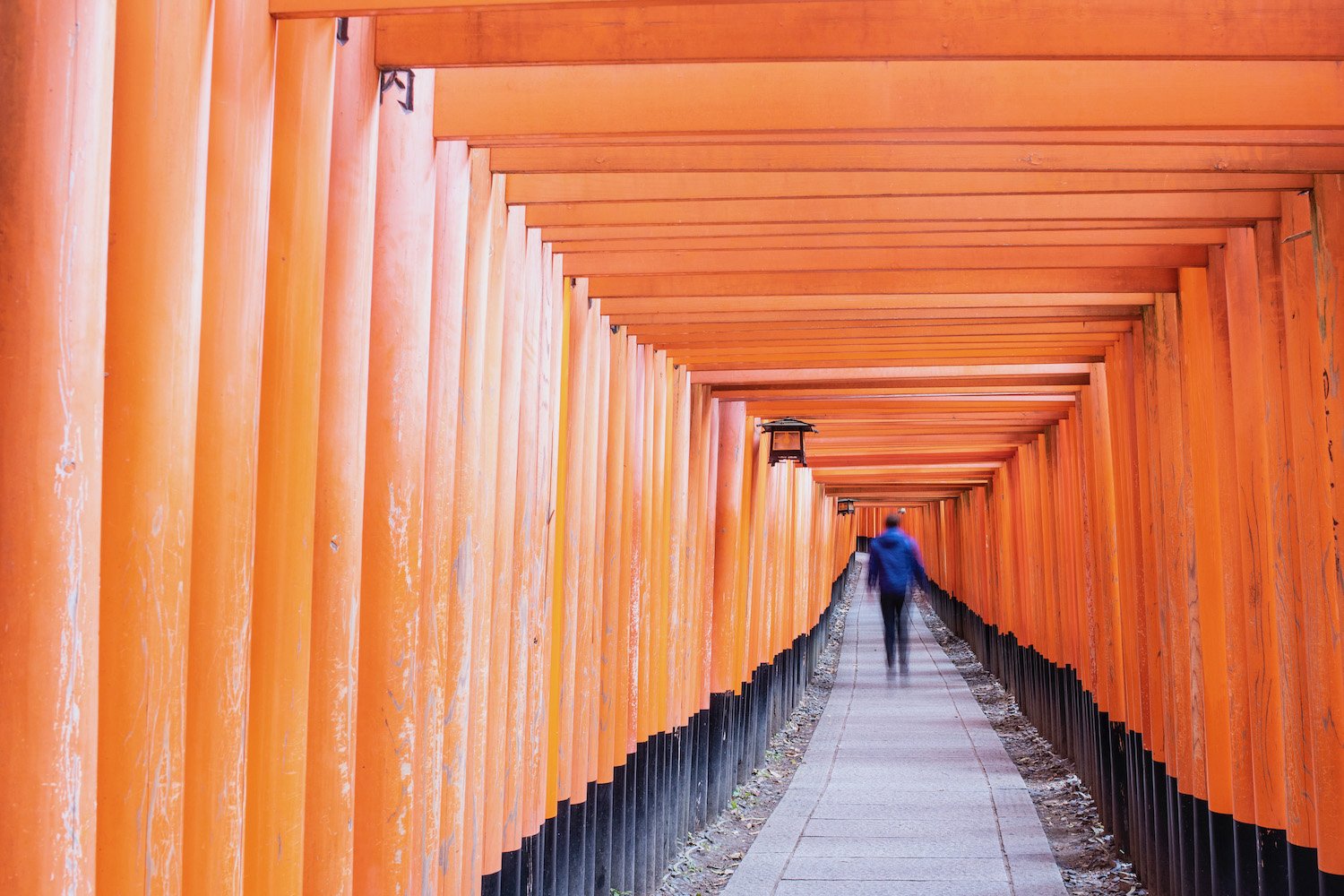
Searching for the famous Kyoto orange gates? You’ll find those at Fushimi Inari Shrine , a short walk from both JR Inari Station and Fushimi-Inari Station of the Keihan Railway . Fushimi is much more than its shrine, however, whether you tour its many picturesque sake breweries, or visit Fushimi Momoyama , and underrated and under-visited castle that is especially beautiful during cherry blossom season. In spite of the ubiquity of the taisha among foreign tourists, in fact, I think you’ll find that most of Fushimi-ku sits well off Kyoto’s beaten path!
See charming cherry blossoms or appreciate autumn colors
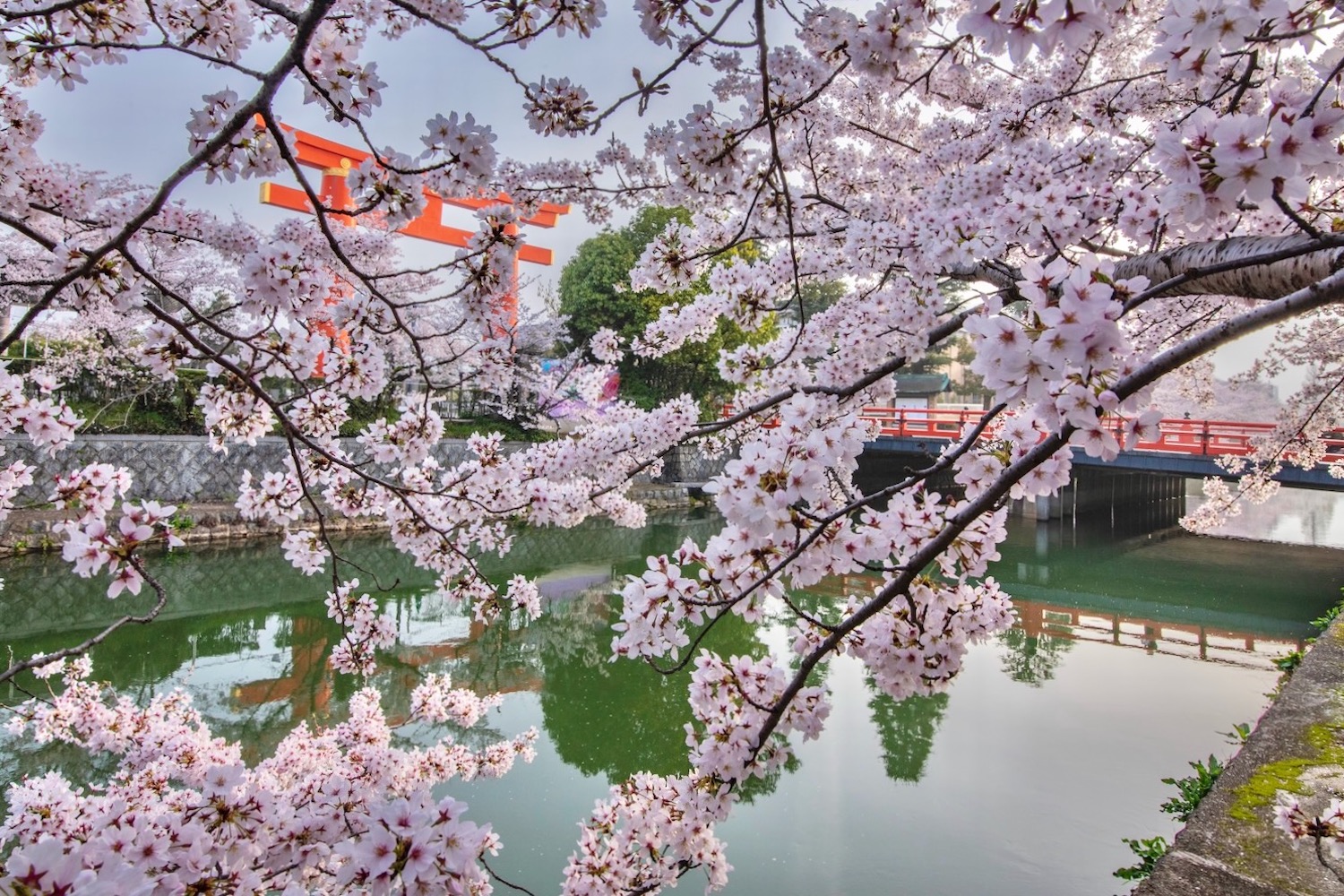
Literally all things to do in Kyoto are more beautiful in early April, when the sakura are blooming , and in late November as autumn’s colors reach their most brilliant blaze. In addition to spots I’ve mentioned so far, which are all gorgeous in their own ways at this time of year, I particularly love enjoy hanami on the banks of the Kamo River just west of Higashiyama , and relishing the abundant red maple leaves of temples like Daigo-ji and Tofuku-ji , which is just one stop south of Kyoto Station by train, or a 20-minute walk away if you’re up for it.
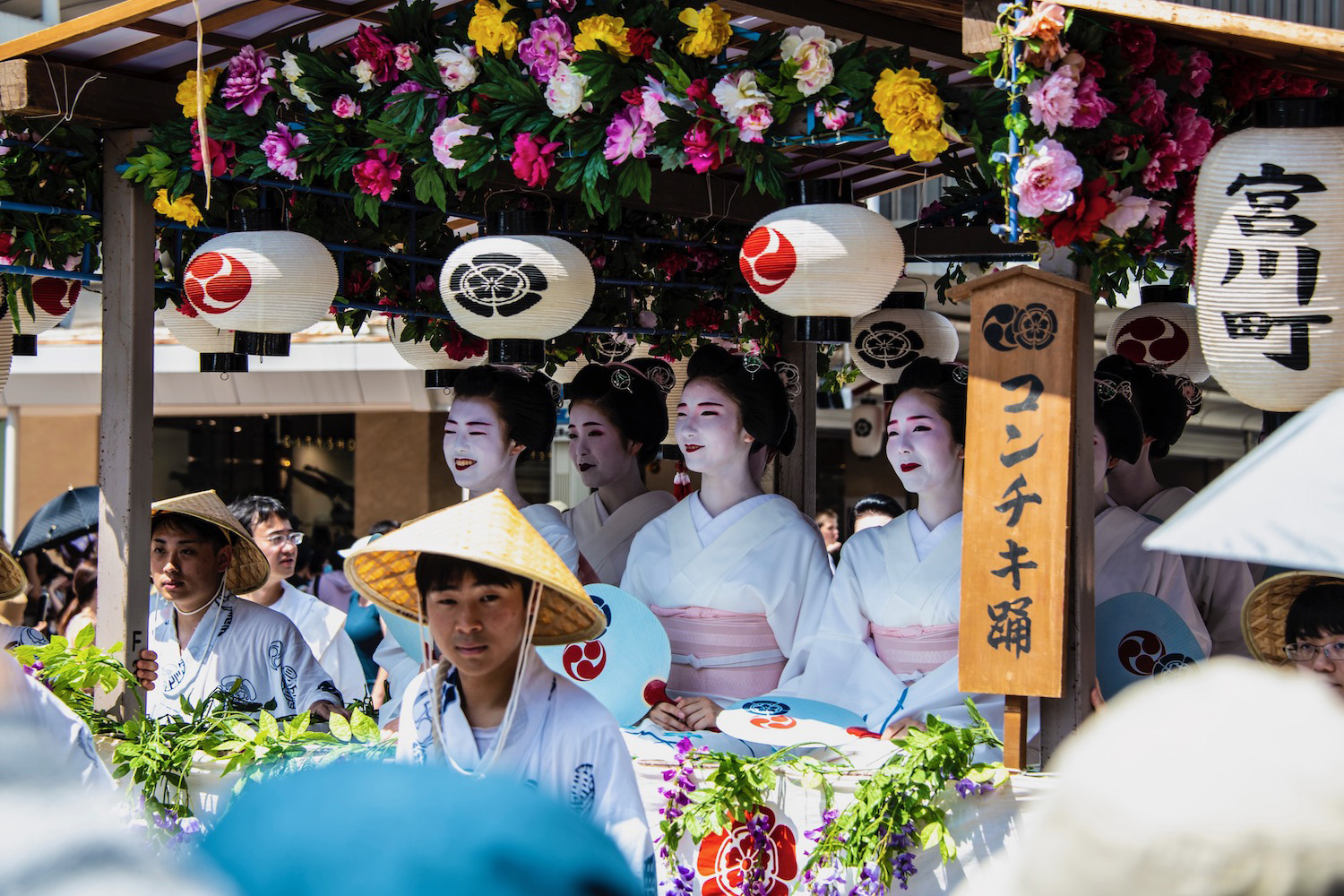
TIP: If you can’t come to Kyoto in spring or autumn but still want to enjoy a seasonal spectacular, come in July for the annual Gion Matsuri , one of the great summer festivals of Japan !
Get out of town—if you can pry yourself away
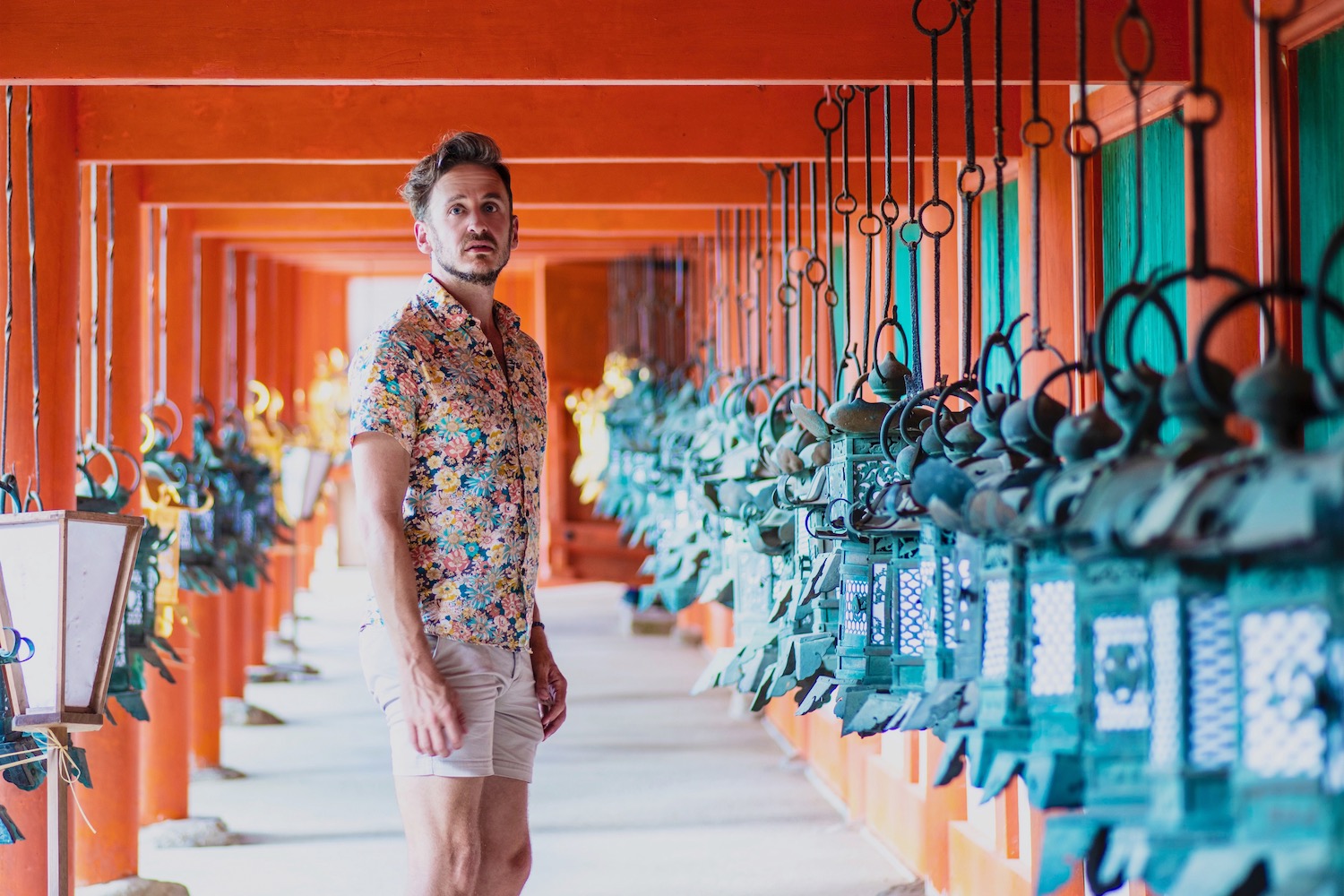
The topic of day trips from Kyoto is at once a popular and controversial one. On one hand, they are as large in number as they are high in quality, whether you traipse amid the tea fields of Uji , or eat world-class wagyu in underrated Kobe , on the “other side” of Osaka, and between Osaka and Himeji Castle . On the other hand, there’s so much to do in Kyoto (especially if it’s your first time), that even reaching relatively close destinations (I’m thinking Hikone Castle on the eastern shore of Lake Biwa , or even Kurama-dera , literally just north of Kyoto’s city limits) can be too much to ask. There’s also Ine Fishing Village , up on the Sea of Japan coast.

How Many Days Should You Spend in Kyoto?
The topic of how many days in Kyoto is one I’ve breached many times, most notably in my popular 2 days in Kyoto post on this very website. However, as is the case for Tokyo , I don’t think the answer to this question is one-size-fits-all. How long you spend in Kyoto depends as much upon what you plan to accomplish in Japan’s former capital (and whether you’ve been here before) as it does how long you expect to spend in the rest of Japan, and in which places.
For example, if you’ve visited before and have knocked off most things to do in Kyoto and only have two weeks in Japan this time, you might just spend a night or two here, particularly if your itinerary includes other historical cities, such as Kanazawa . If, on the other hand, you’re spending a month in Japan (or longer) and it’s your maiden voyage to the country, four or five days in Kyoto (or longer) may very well be in order.
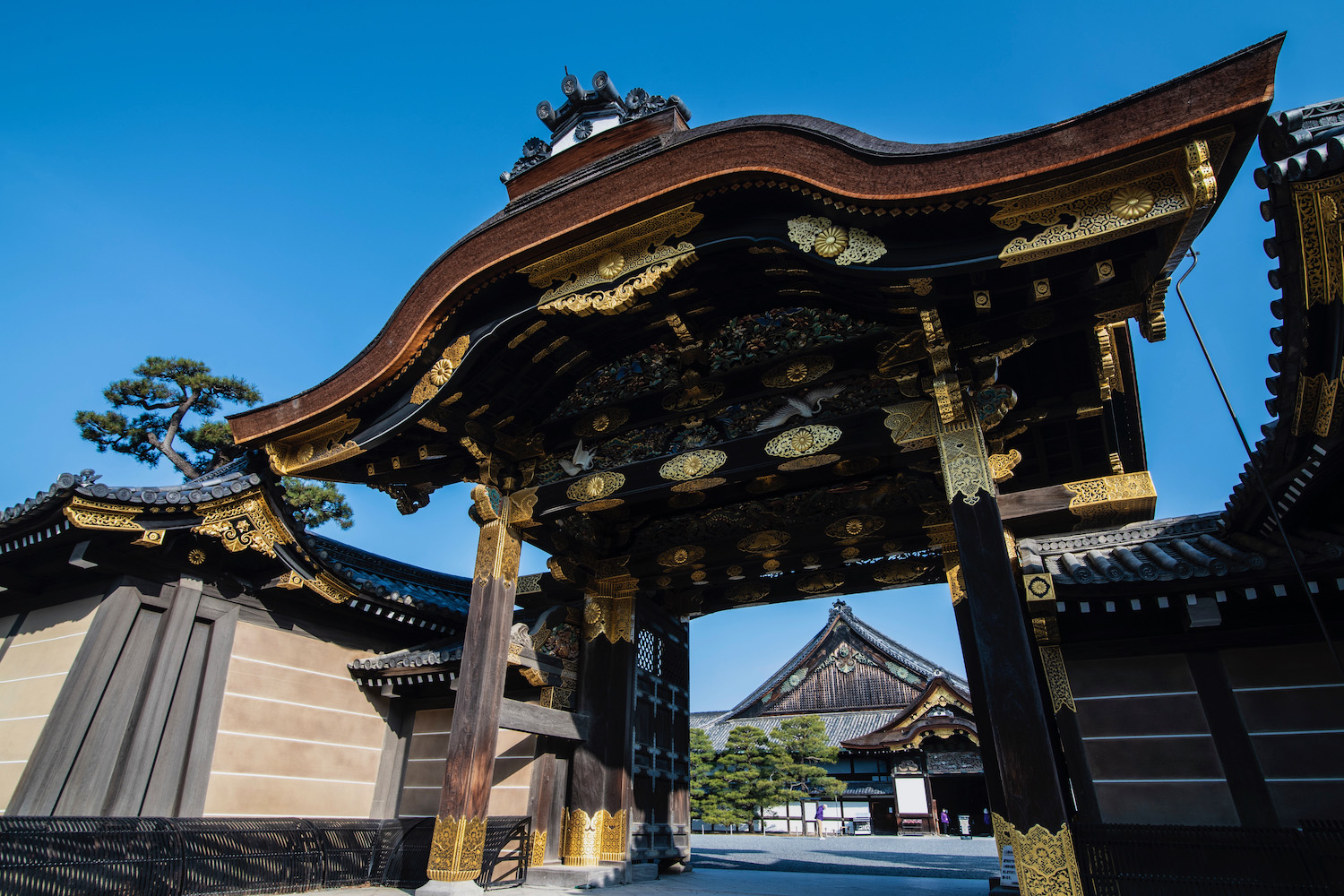
Other FAQ About Planning a Kyoto Itinerary
What should i not miss in kyoto.
When you come to Kyoto, make sure not to miss the diversity of sights and experience. Kyoto is as much about the lush forests of Arashiyama and mysterious shrines (and sake breweries !) of Fushimi as it is about the enchanting temples of Higashiyama. Likewise, if you visit Kyoto when the cherry blossoms or autumn colors are near their peak, you can’t miss hanami or koyo experiences.
Is 4 days in Kyoto enough?
4 days is an excellent amount of time to spend in Kyoto. This will give you a full day each in Higashiyama, Arashiyama and Fushimi, plus the opportunity to take at least one day trip, whether to deer-filled Nara , sacred Mt. Koya or magnificent Himeji Castle in Hyogo prefecture. Alternatively, if you’ve seen Kyoto’s main sights on a previous trip, spending four days here upon your return to Japan will empower you to dig deep.
Where should I stay in Kyoto for the first time?
I personally love staying right in the hear of Higashiyama, although other locations are more logistically advantageous. For example, staying along Karasuma-dori, Kyoto’s main north-south thoroughfare, centrally situates you for sightseeing, particularly if you’re anywhere near the intersections with Gojo, Shijo and Sanjo roads, which connect to Higashiyama and Gion via bus and rail.
The Bottom Line
My Kyoto travel guide is not exhaustive, but it is instructive. Rather than attempting to see “everything” in Kyoto in a single trip, whether it’s your first or 50th, focus instead of optimizing your enjoyment as much as the number of places you visit. Given Kyoto’s long history, the city will likely be with us for at least another few centuries—it’s not going anywhere. Use what you missed during a given trip to Kyoto as inspiration for your next one! Speaking of which, the time is drawing closer when it will be possible to enter Japan again, as the coronavirus pandemic recedes. Hire me to plan your trip to Japan , both in Kyoto (my current home) and elsewhere throughout the country.
Plan Your Japan Trip

Subscribe to email updates!
Words, images and design ©2018-2024 Robert Schrader, All rights reserved. Read Privacy Policy or view sitemap .
- Media & Industry
- Meetings & Events
- Select Language 简体中文 繁體中文(香港) 繁體中文(臺灣) India (English) Bahasa Indonesia 한국어 ภาษาไทย Tiếng Việt Singapore (English) Philippines (English) Malaysia (English) Australia/New Zealand (English) Français Deutsch Italiano Español United Kingdom (English) Nordic countries(English) Canada (English) Canada (Français) United States (English) Mexico (español) Português العربية Japan(日本語) Global (English)
- India (English)
- Bahasa Indonesia
- Singapore (English)
- Philippines (English)
- Malaysia (English)
- Australia/New Zealand (English)
- United Kingdom (English)
- Nordic countries(English)
- Canada (English)
- Canada (Français)
- United States (English)
- Mexico (español)
- Global (English)
- Fujiyoshida
- Shimonoseki
- Ishigaki Island
- Miyako Island
- Kerama Island
- Tokyo Island
- Koka & Shigaraki
- Hida Takayama
- Ginza, Nihonbashi
- Beppu & Yufuin (Onsen)
- Ginzan Onsen
- Nagasaki Islands

- Kumano Kodo
- Shikoku Karst
- Amami Oshima
- Hachimantai
- Omihachiman
- Aizuwakamatsu

- Diving in Japan
- Skiing in Japan
- Seasonal Flowers in Japan
- Sustainable Outdoors
- Off the Beaten Track in Japan
- Scenic Spots
- World Heritage
- Home Stays & Farm Stays

- Japanese Gardens
- Japanese Crafts
- Temple Stays
- Heritage Stays
- Festivals and Events
- Theater in Japan
- Japanese Tea Ceremony
- Cultural Experiences in Japan
- Culture in Japan

- Local Cuisine Eastern Japan
- Local Cuisine Western Japan
- Local Street Food
- Japan's Local Ekiben
- Japanese Whisky
- Vegetarian and Vegan Guide
- Sushi in Japan Guide
- Japanese Sake Breweries

- Art Museums
- Architecture
- Performing Arts
- Art Festivals
- Japanese Anime and Comics
- Japanese Ceramics
- Local Crafts

- Scenic Night Views
- Natural Wonders
- Theme Parks
- Samurai & Ninja
- Iconic Architecture

- Wellness Travel in Japan
- Japanese Ryokan Guide
- A Guide to Stargazing in Japan
- Relaxation in Japan
- Forest Bathing (Shinrin-yoku)

- Experiences in Japan
- Enjoy my Japan
- National Parks
- Japan's Local Treasures
- Japan Heritage
- Snow Like No Other
- Wonder Around Japan

- Visa Information
- Getting to Japan
- Airport Access
- COVID-19: Practical Information for Traveling to Japan
- Anime Tourism
- Countryside Stays
- Accessible Tourism
- Hokkaido Great Outdoors
- Scenic World Heritage in Tohoku
- Shikoku’s Nature and Traditions
- Southern Kyushu by Rail

- Traveling by Rail
- How to Travel by Train and Bus
- JR Rail Passes
- Scenic Railways
- Renting a Car
- Sustainable Travel in Japan
- Travel Brochures
- Useful Apps
- Online Reservation Sites
- Eco-friendly Accommodation
- Luxury Accommodations
- Traveling With a Disability
- Hands-free Travel
- How to Book a Certified Tour Guide
- Volunteer Guides
- Tourist Information Center

- Japanese Manners
- Spring in Japan
- Summer in Japan
- Autumn in Japan
- Winter in Japan
- Cherry Blossom Forecast
- Autumn Leaves Forecast

- Japan Visitor Hotline
- Travel Insurance in Japan
- Japan Safe Travel Information
- Accessibility in Japan
- Vegetarian Guide
- Muslim Travelers
- Safety Tips

- JAPAN Monthly Web Magazine
- Arts & Cultures
- Nature & Outdoor
- Festivals & Events
- Insider Blog
- Things to do
- Local Guides
- Food & drink
- Traditional
- Hokuriku Shinetsu

My Favorites
${v.desc | trunc(25)}
Planning a Trip to Japan?
Share your travel photos with us by hashtagging your images with #visitjapanjp
Kansai Kyoto A New Guide to Traveling Around Kyoto
- Destinations
Experience the essence of Japanese culture, constantly evolving throughout history
When visiting Kyoto, it's best to keep in mind that many local residents call this ancient city home. To enjoy your trip to the fullest, please show consideration to local communities and mind your manners to help preserve Kyoto's culture and keep tourism sustainable moving forward.
Due to Kyoto's increasing popularity, the city sometimes has an excessive concentration of tourists during particular times and seasons, or in certain areas – making life difficult for locals, and potentially damaging to natural environments.
How to Get There
- Kyoto’s grand shrines, ancient castles and historical streets
- Ohara’s crisp mountain air, stunning autumn foliage and symbolic gardens
- Kyoto’s traditional Japanese inns, an essential convergence of Japanese tradition and culture
- Kyoto cuisine, which perfectly encapsulates the Japanese spirit and art of food preparation
- The four alternative views of Kyoto: Kyoto by the Sea, Woodland Kyoto, Tea Country Kyoto and Kyoto Otokuni Bamboo Groves
Recommended for You
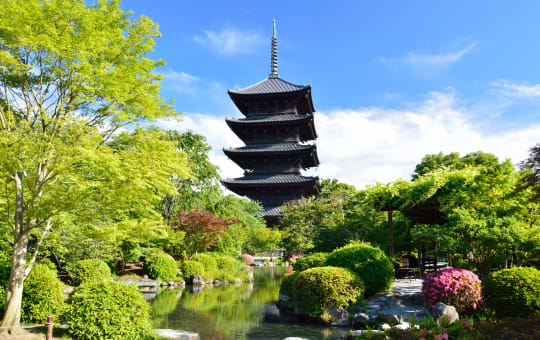
Cherry Blossoms
Forecast of first bloom
24 Mar 2024
Forecast of full bloom
01 Apr 2024
Explore Kyoto by Area

Trending Attractions in Kyoto

Local Specialties
Yudofu, literally "hot-water tofu", is arguably the best way to enjoy high-quality, freshly made tofu. Tofu is warmed through in a simple broth made of water and kombu, and simple condiments are served alongside. Kyoto is the place to enjoy this, as it is the epicenter of Buddhist cuisine, in which yudofu features heavily.
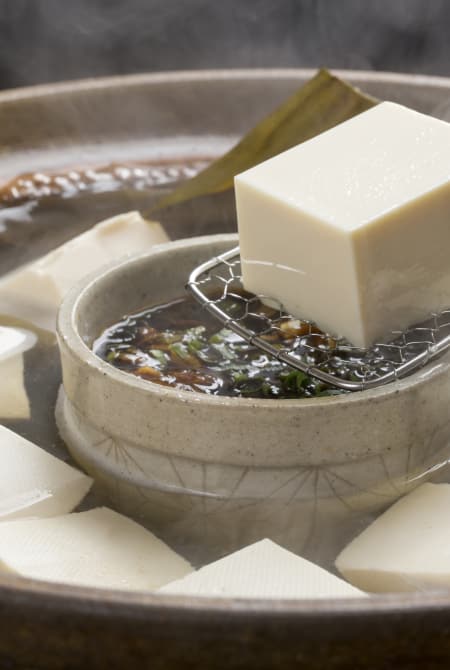
Kyo-gashi are a type of wagashi, or traditional Japanese sweet. Kyo-gashi are beautiful, colorful and symbolic confections, custom-made for different occasions, so no Kyo-gashi will ever be exactly the same as another.
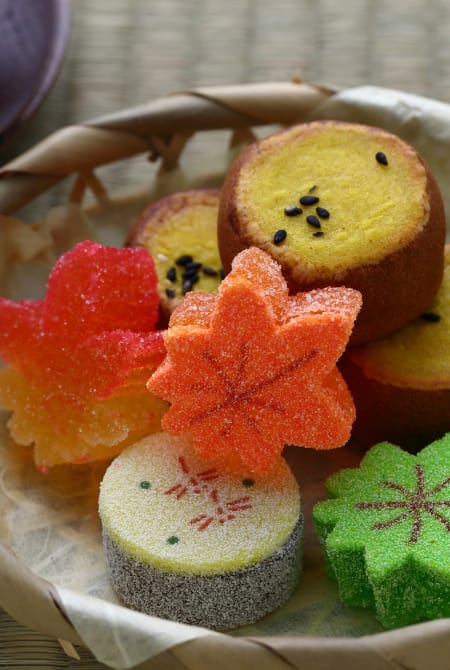
Before modern transportation was available, farmers grew only the vegetables most suited to the regions they farmed in. Kyo-yasai are vegetables traditionally grown in Kyoto for centuries, and they play an important role in modern Kyoto cuisine.

Green tea from Uji is among the oldest and most highly regarded teas in Japan. You'll find it in tiny soba restaurants and temple gardens and many places in between. There are a variety of ways to enjoy green tea while in Uji.

Kyoto Kiyomizu Ware
Handmade ceramics and porcelain made in Kyoto are known as kyo yaki or Kiyomizu yaki and are characterized by their gorgeous elegance made with advanced pottery techniques. This craft evolved alongside other sophisticated pastimes in Kyoto, including the tea ceremony and flower arranging.

Kyoto Dyed Silk
Invented in the late 17th century, kyo yuzen is a dyeing technique distinguished by vivid colors, subtle gradations, complex patterns and precision linework. Traditional Japanese painting-like patterns are expressed in the textile design.
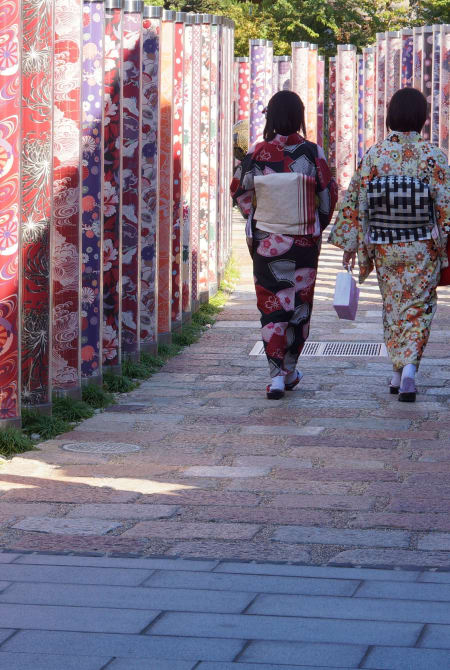
Nishijin Textiles
Nishijin ori silk textiles originate in Nishijin, the garment district of Kyoto. Exquisitely decorated brocades have been handwoven here for centuries, and feature gorgeous patterns utilizing multi-colored yarn-dyed threads. Treated with care, these garments can last a lifetime.
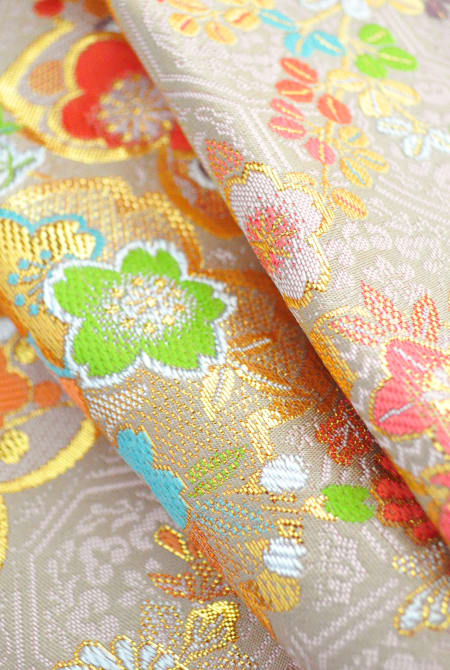
Kyoto Folding Fans
Fashioned out of bamboo, the kyo sensu is a folding fan decorated with handmade Japanese paper or silk on thin wooden strips, traditionally cypress. These artful accessories are used at ceremonies, festivals and Noh performances.
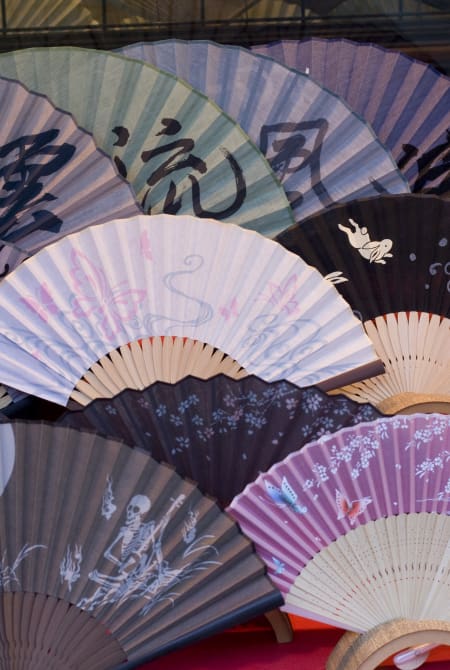
Seasonal Highlights
Late April to May is the time to view late-blooming cherry blossoms, yaezakura (double-flowered cherry blossoms) and the fresh green maple leaves in shrine and temple gardens.
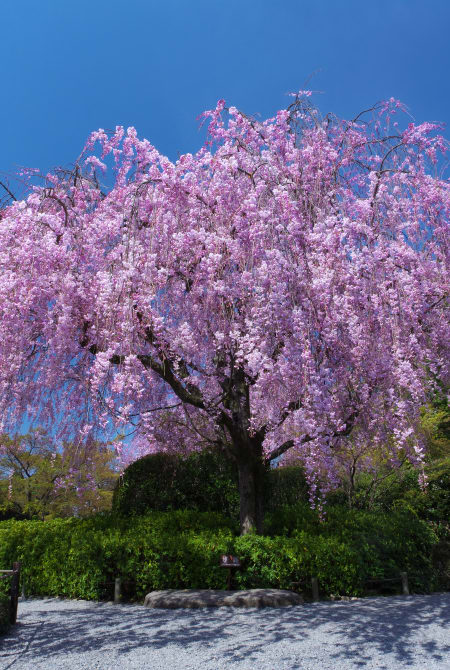
Highlights of the hottest season include riverside dining, cormorant fishing performances, beach excursions, the month-long Gion Festival, and fire displays to honor the spirits of ancestors.
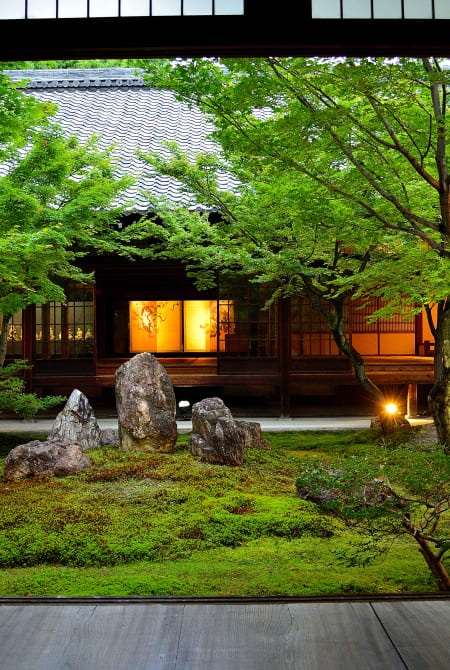
Kyoto’s autumn foliage attracts visitors from the world over. Harvest moon festivals are another autumn highlight. The cool temperatures are perfect for hiking at Mt. Ponpon and Mt. Atago.
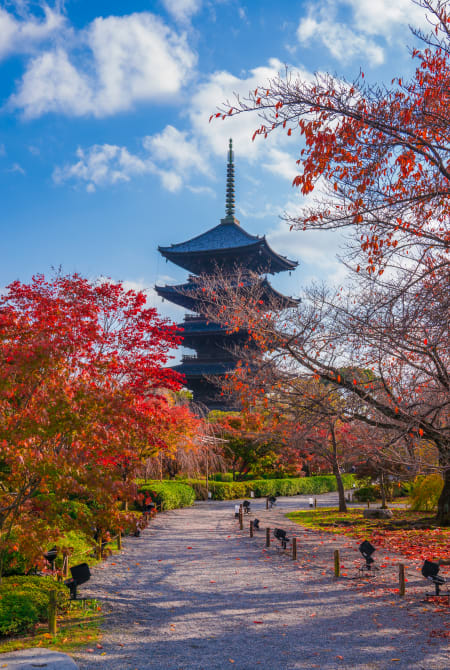
Kabuki’s biggest stars come to perform, plum blossoms emerge after the snows, and countryside onsen offer plenty of warmth.
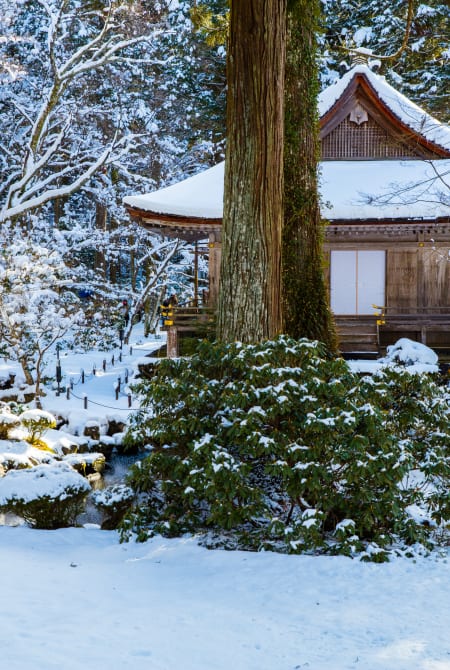
Related Links
Discover what to do and where to go in Kyoto—Japan’s culture capital
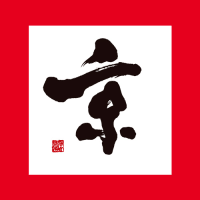
Delve deeper into Kyoto culture by taking part in a free craft workshop

Explore Nearby Prefectures
Please Choose Your Language
Browse the JNTO site in one of multiple languages
- Share full article
Advertisement
Supported by
Sacred Sites and Sun-Dappled Canals: Kyoto from the Water
The Japanese city is famous for its temples and gardens, but it is laced with waterways that can offer a different, and no less enchanting, view.

By Patrick Scott
For more than a millennium, Kyoto flourished as the imperial capital of Japan. But in a seismic upheaval known as the Meiji Restoration, in which feudal shogunates gave way to a modern nation-state, the capital was moved to Tokyo in 1868. And Kyoto fell into decline.
The governor of Kyoto Prefecture looked to giant Lake Biwa to the east for a revival. Building a canal from the lake some eight miles into Kyoto would irrigate land for farms, generate hydro power for factories, and ramp up traffic of goods and people. The first canal was finished in 1890, and as a display at the Lake Biwa Canal Museum explains, “strongly led a depressed Kyoto into recovery.”
It’s a safe bet that the governor, Kunimichi Kitagaki, had no idea that 134 years later his sepia portrait would be sharing that narrative with tourists barreling through the canal’s longest tunnel in a glass-topped boat. But there he was, projected on the side of the narrow tunnel, explaining in Japanese how workers drilled shafts into the mountain so they could dig out more than one section at a time.

“Three, two, one!” our cruise guide, Saki Tanaka, shouted over the public address system, pointing up at the low, arched ceiling.
A curtain of cold water crashed down from one of those shafts, splashing those of us seated in the front of our open-sided 12-person Lake Biwa Canal Cruise boat.
While many people come to Kyoto to visit palaces, temples and Zen gardens, or even to stroll the streets in a rented kimono, we had come to explore the city’s abundance of rivers, canals and streams.
Our timing was unintentionally perfect. When we arrived in the second week of April, the cherry trees were peaking with glorious bursts of white and pink called sakura. And one of the best places to find a bounty of blossoms is alongside Kyoto’s rivers and canals.
We stayed on the banks of the Shirakawa River, not far from the city’s Gion district, and over five days we trekked to the northern hills to find a shrine to a water god; biked along the city’s main river, the Kamo; visited a sake brewery that uses Kyoto’s famed groundwater; serendipitously discovered a sakura cruise along one of the city’s canals; and then zoomed through the tunnels of the Lake Biwa Canal. Our goal was a deeper understanding of how water had shaped the city.
Boating through the blossoms
The stone-walled Shirakawa, next to our hotel, was not more than a foot deep and 20 feet wide, and its bed was so thoroughly studded with little stones that the entire surface crinkled, each tiny wavelet glinting in the sun. As we walked along it, an older couple ate sandwiches on a bench next to the water. Children in school uniforms crossed a little stone bridge.
After a 10-minute stroll north, the river opened onto Okazaki Park and the wider, deeper, emerald green Outou Canal, built as part of the Lake Biwa system in 1890. The sleek glass-and-granite National Museum of Modern Art, Kyoto , graced the opposite bank. Long, knobby boughs loaded with clumps of white flowers reached out and down to the canal as if striving for the reflected sun.

Kifune Shrine
Kibuneguchi Station
Kibune River
Mabashihitodo Bridge
Marutamachi
Lake Biwa Canal
Gekkeikan Ōkura
Sake Museum
Marutamachi dori
Nanzenji Boat
Okazaki Park
National Museum of
Modern Art, Kyoto
Canal Museum
Keage Boat Dock
Shinmonzen-dori
Then a boat glided into the Technicolor tableau, cruising under a red-orange bridge. We followed it to the Nanzenji boat reservoir, to a tent where they were selling tickets for the boat ride. We were in luck. The Okazaki Jikkokubune Boat Ride runs only in March and April, and it was almost fully booked on this Sunday, but they had two tickets for the 5 p.m. trip.
As we waited in a row of chairs next to the canal, petals from the cherry trees fluttered down like snowflakes on our heads. When it was our turn, the pink-smocked staff members helped 26 of us board the narrow boat and waved enthusiastically from the dock as we made a U-turn to head downstream.
There was a lot of waving going on. Almost everyone we passed on the embankment and bridges smiled and waved, and we smiled and waved back.
A stylishly dressed young couple on a day trip from Osaka sat to our left. Two sisters from Tokyo, one with a 4-year-old son, all in colorful kimonos, were on our right. The air was warm. The boat purred along. Flute music floated from the speakers. A white egret swooped over the surface.
As we neared a bridge that we could almost touch, hydraulics lowered the roof of the boat by several inches. The young couple stared out at the wavelets in the glossy jade water and the trees exploding with popcorn blossoms.
“Look at the sunlight on them,” said my wife, Susan. “They’re practically iridescent.”
Visiting the water god
Our destination on our second day was the home of the water god at the ancient Kifune Shrine, on the Kibune River, about nine miles north of the center of Kyoto and reachable by train.
The weather had turned chilly and rainy. In the distance, a green mountainside was crowned with clouds and sprinkled with white and pink cherry trees.
Our stop was Kibuneguchi Station, in the middle of the woods next to a little river. The only sounds were the whir of the departing train and the rush of tumbling water. Instead of waiting for a bus, we walked up the winding, one-lane road in the drizzle, pondering a mallard perched midstream on a rock carpeted in moss and widening our eyes at the “Watch Out for Bears” signs.
Nearly an hour later, a steady rain fell as we climbed stone steps flanked by a gantlet of vermilion lamp posts up to the shrine. The water that flows from the temple is considered sacred. Life-size statues of rearing horses next to the stone purification fountain illustrated how imperial envoys over the centuries made offerings of black horses to bring rain and white to end floods.
In the little courtyard, we followed the lead of a pair of young women who placed sheets of paper into a stone trough from which water overflowed. Invisible ink revealed fortunes — ours advised against sexual affairs — and we tied the folded paper to a grid of thin wires.
In the nearby village, restaurants lining the river, shuttered when we walked by, serve dinner in the summer on decks extending over the rushing water.
As an alternative, back in town we climbed to the fourth floor of a building near the Kamo in the popular Pontocho neighborhood to an eight-seat, spotlit bar that felt as if it had been plucked out of a film noir. The proprietor, Fujii Kouji, opened Bar Prestige in 1995, serving drinks in a white cuffed shirt and playing mostly jazz instrumentals like “Mingus at Monterey.”
Our Japanese whiskey was a good warm-up for the next day’s waterway-adjacent excursion, a sake brewery tour in the Fushimi district, south of town. On the train, we learned from a calligraphy artist, Hiroshi Ueta , on his way to Osaka, that the most renowned Kyoto water actually comes from underground.
“It’s soft water, good for making sake, tofu and tea,” he said.
Sure enough, during our Kyoto Insider Sake Experience tour in the courtyard of the Gekkeikan Okura Sake Museum , our guide, Greg West, explained that Kyoto’s water is so soft that the rice wine made with it was called “feminine sake” in past centuries.
We also learned that the rivers and canals in the district were crucial for delivering rice to the breweries, and that the Fushimi sake district in Kyoto is one of Japan’s major sake producers, with about 25 breweries. In the nearby tasting room, we sipped seven sakes with food pairings, and decided that our favorite was the soft and fruity junmai daiginjo made with iwai rice grown in Kyoto.
Biking through history
We set the fourth day aside for the Kamo River, fueling up for a bike ride along it with brunch at Padma , a vegetarian restaurant on its banks not far from the Imperial Palace.
We downloaded the kotobike bike-sharing app, found two bikes in a nearby garage (tip: for day passes, each rider needs a separate account) and pedaled north from the Marutamachi Bridge .
Kyoto is divided east and west by the Kamo, which runs a shallow and relatively short 20 miles. It has been a central artery of Kyoto’s social life for centuries. Dining over the river on platforms was depicted in block prints and poetry in the 1600s and continues today in the summer. Over the centuries the river was lined with playhouses where Noh and Kabuki were performed, and its banks were the site of public executions of criminals and samurai, according to Michitake Hisaoka, the curator of the Lake Biwa Canal Museum. “The riverbanks of the Kamo River was a place where life and death coexisted,” Mr. Hisaoka wrote in an email.
We rode north on the east bank, where two older women in big sun hats and face masks stopped to watch a young man play a trumpet. Schoolboys jogged past in cross-country uniforms. Families sat in the grass holding umbrellas over babies.
Circling black kite hawks, paddling mallards, swooping gray herons and cawing large-billed crows were our constant companions as we rode the paved path and took the fork on the right toward Mount Hiei. The low peak, about 18 miles north of the city center, happened to be the source of the Shirakawa River, which flowed by our hotel. Soon the path ended and we crossed the Mabashihitodo Bridge and came down the west side as the white sun set in a gray-blotched sky.
Cruising the Lake Biwa Canal
On the final day, after a quick round of shopping for woodblock prints on the city’s signature antiques street, Shinmonzen-dori , we caught a taxi to the Lake Biwa Canal Museum.
Boats on the canal, for decades loaded with cargo and passengers, disappeared in the 1950s as roads and rail dominated. The boats returned after 67 years when the Lake Biwa Canal Cruise began in 2018. This year it had four tourist boats running from the end of March to early June and in October and November.
Before we set off, Ms. Tanaka paused her commentary in Japanese to show me a translation on her phone. The ride through the canal’s four brick tunnels would be “fast and cold.” The longest of them, 1.5 miles, started with a pinprick of light at the end. The governor’s talking portrait seemed designed to distract us from the roaring engine, the churning water, the stinging wind.
After 10 shivering minutes, we emerged to a storybook scene of a bend in the canal — pine and maple trees on the left; cherry trees reaching out from the right, dappling the surface with sunlight and shade, an effect known as komorebi.
“The scenery is very beautiful on both sides, so please enjoy,” Ms. Tanaka’s screen said.
Lake Biwa Canal Cruise : The five-mile ride one-way from the Keage boat dock to the dock near Miidera Station , lasts an hour and 20 minutes (6,000 to 14,000 yen per person, or about $42 to $98 per person).
Okazaki Jikkokubune Boat Ride : Two boats run only in March and April. The half-hour round-trip ride starts and ends at the Nanzenji boat reservoir (2,000 yen per person). Similar boats operate in Fushimi with a season that goes into December.
Kyoto Insider Sake Experience : Daily tours, like a three-hour sake tasting and brewery tour (13,000 yen per person), start at the Gekkeikan Okura Sake Museum . More sake sampling, alone and with food pairings, follows at the tasting room a few blocks away.
Kifune Shrine : Moved to its current location in the forested hills in northern Kyoto in 1055, the shrine is dedicated to the water god Takaokami-no-kami. Take the train to Kibuneguchi Station and then ride a bus or walk the remaining 1.3 miles. Open daily May 1 to Nov. 30 from 6 a.m. to 8 p.m. Free admission.
Kamo River bike ride: Download the kotobike app for access to bicycles at docks across the city (900 yen for a six-hour pass).
Patrick Scott writes frequently for Travel. Follow him on Instagram: @patrickrobertscott .
Follow New York Times Travel on Instagram and sign up for our weekly Travel Dispatch newsletter to get expert tips on traveling smarter and inspiration for your next vacation. Dreaming up a future getaway or just armchair traveling? Check out our 52 Places to Go in 2024 .
Come Sail Away
Love them or hate them, cruises can provide a unique perspective on travel..
Icon Class Ships: Royal Caribbean’s Icon of the Seas has been a hit among cruise goers. The cruise line is adding to its fleet of megaships , but they have drawn criticism from environmental groups.
Cruise Ship Surprises: Here are five unexpected features on ships , some of which you hopefully won’t discover on your own.
Icon of the Seas: Our reporter joined thousands of passengers on the inaugural sailing of Royal Caribbean’s Icon of the Seas . The most surprising thing she found? Some actual peace and quiet .
Th ree-Year Cruise, Unraveled: The Life at Sea cruise was supposed to be the ultimate bucket-list experience : 382 port calls over 1,095 days. Here’s why those who signed up are seeking fraud charges instead.
TikTok’s Favorite New ‘Reality Show’: People on social media have turned the unwitting passengers of a nine-month world cruise into “cast members” overnight.
Dipping Their Toes: Younger generations of travelers are venturing onto ships for the first time . Many are saving money.
A minimalist teahouse makes a serene addition to a Tadao Ando-designed Kyoto hotel
Ogata at The Shinmonzen is a contemporary reinterpretation of a Japanese teahouse that sells traditional blends, confectionery, crafts and fragrances
- Sign up to our newsletter Newsletter
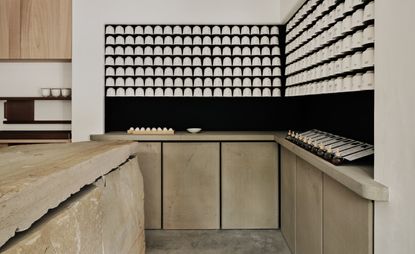
Tea and craft are markers of the coexistence between humans and nature. These elemental ingredients lie at the heart of Ogata at The Shinmonzen , a new teahouse and boutique in Kyoto that offers a contemporary reinterpretation of Japan ’s traditional tea culture. The new space sits just behind the latticed façade of The Shinmonzen, an escapist, contemporary nine-suite hotel designed by Tadao Ando , on a quiet street in the Gion district.
Ogata at The Shinmonzen, Kyoto

Ogata at The Shinmonzen was brought to life by Shinichiro Ogata, founder of Tokyo -based studio Simplicity, long respected for its contemporary reimaginings of Japan ’s traditional culture for daily life. This one follows in the footsteps of flagship Ogata Paris, which opened four years ago with a boutique, restaurant, tea salon and gallery in a 17th-century hôtel particulier in the Marais district.
The Kyoto rendition, like the ancient city itself, is intimately scaled. Light-flooded and serenely minimalist with a natural material palette, it spans two spaces, accessed via a street-level entrance cut into the hotel’s wooden façade. The left side is all about tea and confectionery, the former prepared at a central stone counter, where crafted traditional wagashi sweets are served. On the right is a curation of crafted objects, including teapots, tea cups and Yoka fragrance – layered blends of natural ingredients ground with a traditional mortar, so, unlike incense, the scent fills the air without being burnt or heated.
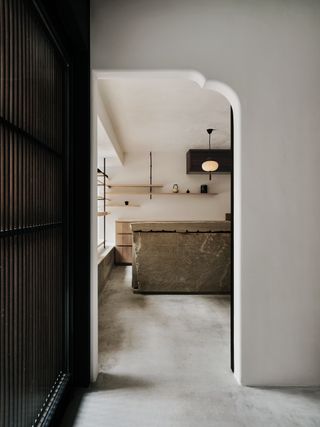
Hoping to ‘propose a way of being that embodies the coexistence of people with nature’, Ogata says, ‘the space is a creative expression of this: two parallel rooms existing in symbiosis. The left section, where Japanese tea and sweets are featured, is raw and natural. The right side, where the objects for daily living are placed, is more structured. Decked with an almost latticework series of shelves, it is a homage to the city of Kyoto and its grid pattern streets.’
The materials and atmosphere are anchored in Japan’s tea culture – as reflected in the standing counter, its raw organic lines hewn from stone sourced from Kyushu, a southern island with a rich tea heritage. ‘Carved out of the earth so as to enhance nature’s etchings, it is very much the gathering place, where the guests are greeted, tea is brewed, objects wrapped,’ explains Ogata.
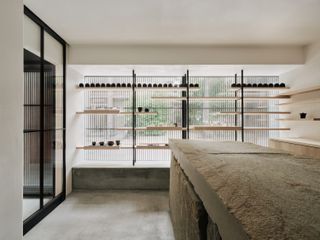
Ten bespoke Japanese tea blends, neatly lined up, are packaged in organic white vessels, crafted from biodegradable bamboo and bagasse – to which boiling water can be directly added, either for an on-the-spot counter tea or to take home. These include tea No.1, a refreshing blend of sencha , yuzu peel and kuromoji twigs, recommended to ‘invigorate and start the day fresh’.
‘I created ten blends in pursuit of the possibilities of Japanese tea for people around the world to enjoy in their daily lives,’ says Ogata, who is opening a third outpost at Château la Coste in France over the coming year. ‘The blends not only reveal the myriad flavours of Japanese tea, but each was created with intention and a proposal of how to enjoy them. There are more invigorating blends to start the day, others I recommend to pair with meals, and even a tea to calm the mind in the evening.’
Wallpaper* Newsletter
Receive our daily digest of inspiration, escapism and design stories from around the world direct to your inbox.
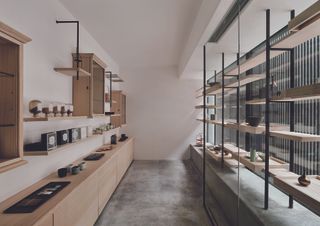
He adds: ‘Many people associate Japanese tea with the tea ceremony, and the many rules associated with it, which can be rather daunting. However, this is only a fraction of the Japanese tea culture; it is also very much an everyday beverage with hundreds of varieties enjoyed across regional Japan.’
For Ogata, the words ‘natural’, ‘dignified’ and ‘of the present’ best sum up the atmosphere of the new spaces. ‘Not only is natural tea beneficial to our health, but more importantly, it brings people together around a common experience. The simple act of adding water to leaves is not bound by culture or religion; with just a few minutes, tea can facilitate this human necessity of slowing down and being together. Through making Japanese tea more accessible to the world, I hope to bring back these simple daily rituals into our hectic lives.’
Find Ogata at The Shinmonzen, Shinmonzen-dori, 235 Nishinocho, Higashiyama Ward, Kyoto, 605-0088, Japan, theshinmonzen.com
This article appears in the October 2024 issue of Wallpaper* , available in print on newsstands from 5 September on the Wallpaper* app on Apple iOS, and to subscribers of Apple News +. Subscribe to Wallpaper* today.
Danielle Demetriou is a British writer and editor who moved from London to Japan in 2007. She writes about design, architecture and culture (for newspapers, magazines and books) and lives in an old machiya townhouse in Kyoto.
Instagram - @danielleinjapan

The Alighieri Bookworm jewellery collection is a treat for literary mavens
By Hannah Silver Published 12 September 24

Alcova, the roving design exhibition, will expand its footprint with two new locations in the northern Milan suburb of Varedo – a former factory and ancient greenhouses
By Laura May Todd Published 12 September 24

The latest version of the Bentley Flying Spur is a technological showcase and an outstanding performer
By Jonathan Bell Published 11 September 24

Set within a 49-storey tower, Four Seasons Osaka takes the traditional ryokan experience to new heights
By Danielle Demetriou Published 5 September 24

Aman Residences Tokyo, Aman Group’s first standalone branded residences, feature dramatic yet serene interiors by Yabu Pushelberg
By Dan Howarth Published 4 July 24

Shiro Kuramata designed hundreds of bars in his lifetime, but few remain intact. Now fans are making a pilgrimage to Comblé Bar in Shizuoka
By Danielle Demetriou Published 22 May 24

Six Senses Kyoto opens its doors boasting tranquil, luxurious interiors by Blink Design Group
By Danielle Demetriou Published 23 April 24

Step inside the Jean-Michel Gathy-designed Janu Tokyo and discover its state-of-the-art wellness facilities
By Jens H Jensen Published 16 April 24

Hotel Rakuragu, brought to life by Kooo Architects, lies within an 80 sq m plot in the area of Chuo-ku
By Danielle Demetriou Published 16 March 24

Kawamichiya Kosho-An is a traditional soba restaurant reimagined by Endo Shojiro Design and td-Atelier
By Sofia de la Cruz Published 19 February 24
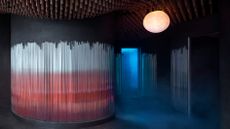
These spa experiences offer the ultimate in wellness and relaxation in serene settings around the world
By Sofia de la Cruz Published 2 February 24
- Contact Future's experts
- Terms and conditions
- Privacy policy
- Cookies policy
- Advertise with us
Wallpaper* is part of Future plc, an international media group and leading digital publisher. Visit our corporate site . © Future Publishing Limited Quay House, The Ambury, Bath BA1 1UA. All rights reserved. England and Wales company registration number 2008885.
$2499—Japan adventure (flights included)

Discover both ancient traditions and futuristic aesthetics in Tokyo, Kyoto and Osaka.
Why We Love This Deal
Travel to Japan's most popular cities on this 8-night semi-guided tour , stepping into shrines, enjoying cultural festivals, and indulging in fresh sake and sushi. This package includes all the travel essentials you'd need, plus two full-day tours, a bullet train ride and two lunches while saving $1100 compared to similar trips.
What's included:
- Roundtrip international flights from the U.S. to Tokyo, return from Osaka
- Japan "welcome pack," including a meet-and-greet at airport and SIM card
- Roundtrip airport transfers
- 8 nights in well-reviewed hotels
- Bullet train ride, plus local bus and subway tickets
- Two full-day tours of Tokyo and Kyoto—visit Meiji Shrine, Kinkakuji Temple, Arashiyama Bamboo Forest and more
- Two lunches
- English-speaking guide for part of the trip
Per-person pricing:
- $2499 … Honolulu, San Francisco
- $2599 … Los Angeles
- $2799 … Cleveland, San Jose
- $2999 … Boston, Columbus, Portland, Tampa
Additional departures are available from 30+ U.S. cities, starting at +$100.
When to go: Depart on select dates in October–December 2024. Travel during the famous cherry blossom season in March–April 2025 from +$200. Departure dates vary by city; see partner's website for more details.
Customize your trip: For an additional cost, take a full-day excursion to Mount Fuji . You can also upgrade your hotels or add up to your 3 nights to your trip.
Additional itineraries: Other Japan trips are on sale, including a 10-night self-guided tour with an excursion to Mount Fuji; or a 2-week itinerary that also visits the charming town of Kanazawa and Hiroshima. You can also visit both Japan and South Korea on this 13-night trip .
Book by Sept. 18.
at 11:59 PM CT on Sep 11
When You Can Go
October–December 2024; cherry blossom 2025 dates +$200
Up to $1100 vs. similar trips
More Deals & Tips
- Trending Deals
- Last-Minute Deals
How to Book
- Monday–Sunday: 24 hours
Mention Travelzoo and vacation code 18108 to get this offer.
Your location
Where are you.

Create an account.
Just one more thing..., check your inbox., create your password..
- Access to exclusive travel, entertainment, and lifestyle experiences
- Hand-picked offers, personally reviewed by our global team of deal experts, delivered to your inbox
- Dedicated club-member customer support
Sign in to your account.
Enter your password.
Please accept this confidentiality pledge:
I agree to maintain the strict confidentiality required to access Travelzoo’s confidential offers. I will not reveal details of these confidential offers publicly, which includes not posting about it on social media. I will not attempt to purchase a confidential offer for anyone else. I understand that violating these conditions can result in my access being revoked.
To view confidential offers, we require that you sign a confidentiality agreement.
Don’t know password?
You're all set, join travelzoo, sign in to unlock, don't miss out, our deal experts have negotiated member exclusive rates for people like you., and you’re in..
Welcome, Travelzoo Member . You now have access to confidential offers. To access Confidential Offers in the future, you can use the link from your email, or the link under My Account on the Travelzoo website. This page is only accessible to Confidential Offer members.
You now have access to all our deals.
Here are the details of the deal you were interested in.
Sign in to save and manage your deal alerts
Sign in to save this deal to favorites., already a member, not a member yet, save this deal to your favorites.
More From Forbes
48 hours of design and culture in kyoto.
- Share to Facebook
- Share to Twitter
- Share to Linkedin
The first time I ever sat on a flight heard 'we've begun our descent', Kyoto had been where I wanted to go. Decades later, at the end of this August, I finally made it—just in time for Typhoon Shanshan. Only 48 hours to spare and a looming city-wide shutdown didn't exactly scream 'perfect getaway.' Yet, that's Kyoto for you—even in the least ideal circumstances, it still sweeps you off your feet.
You don't have to look hard to find beautiful design in Japan's former capital. It's all around: in the bold typography that lines the sidewalks, the small linen curtains that mark a restaurant's entrance, the origami lanterns that dangle along the riverside, and the tidy nature of the streets. They make everything look in vogue, even the saloon-style Lawson Station (a convenience store chain) logo, which, if found in Texas, would look like a parody of itself. Every detail, from the dainty flower arrangements in shop windows to the symmetry of sake bottles on bar counters, feels effortless and intentional all at once.
It's easy to fall in love with the place. It's like a summer romance you just can't shake, one you know will still occupy your thoughts years later. With a crush like Kyoto, it's easy to get lost and let your mind wander. But don't get too swept away—stay present because every detail counts. Here's how an art and design lover can make the most of 48 hours with their new muse, Kyoto.
_________________________________________________________
3 p.m. | Check into Ace Hotel Kyoto
I arrive at Ace Hotel Kyot o , designed by legendary architect Kengo Kuma in the former Kyoto Central Telephone Office. There are couples in monochrome linen overalls and canvas totes saying things like 'Sleeping in Seattle.' The receptionist who checks me in wears a black hat that reads 'FBI Warning,' and by day, the long wooden table in the lobby is packed with people working on their laptops—an ideal setting for a Kyoto meet-cute. My room has nuanced touches like a vinyl player with niche records by artists like Chief Ebenezer Obey. On the second floor, the PIOPIKO taco bar was abuzz when I stopped by for an afternoon aperitif. And just outside, the streets are lined with ceramics and vintage shops, right in the heart of it all.
Ace Hotel Kyoto
Google Is Deleting Gmail Accounts—3 Steps Needed To Keep Yours
Used tesla cybertruck price continues to crash, new and dangerous android attack warning issued.
4 p.m. | Local Design Shops
Kyoto is the kind of place you could roam around endlessly. The streets are compact, and it feels like you could spread your arms and reach from one side to the other. I wander around and stumble upon Osugi Shoten, a small antique ceramic store. The shopkeeper enthusiastically takes me through the different periods of Japanese pottery. When I finally chose a cup, he noticed a tiny scratch I hadn't seen and knocked 9,600 yen off the price without me asking—only in Japan. Among my other favorite stops were mumokuteki goods & wears , Ordinary Fits , Kapital , and Kyo Amahare . The more denim and vintage stores you go to, the better.
Kyo Amahare
6 p.m. | Pontocho Alley
With time to spare before dinner, I head to Pontocho Alley, a narrow lane by the river filled with restaurants and bars. The wooden façades and lantern-lit paths are the perfect introduction to a city. A glass of sake in one, an order of yakitori in another, and a crisp pour of Japanese whiskey in the next. Roam around and drop in anywhere that calls you. I ended up at Kyotoen Yakitori , which, if you ask me, is well-deserving of its 4.9-star Google Review rating.
7 p.m. | Sushi Rakumi
Dinner is a 20-or-so-course, 2-Michelin-star affair at Sushi Rakumi , a tiny wooden sushi counter on a quiet street in the Higashiyama-ku neighborhood. With just eight seats, the intimate setting turns strangers into fast friends. Corn custard with uni, Pacific saury, otoro nigiri, and the sweetest melon I've ever had are just some highlights of this whirlwind culinary experience.
8 a.m. | Stumptown at Ace Hotel Kyoto
Stumptown's first international outpost, tucked right inside the hotel, brings a slice of the Pacific Northwest to Kyoto. It's a dream for coffee aficionados—espresso, drip coffee, and whole beans are all on hand, along with Stumptown's signature merchandise. But for non-coffee drinkers like me, it's the in-house pastries that steal the show. Whether you're grabbing a morning pick-me-up or just in it for the sweets, it's a great way to start the day.
Stumptown at Ace Hotel Kyoto
9 a.m. | Arashiyama Bamboo Forest
A short trip to the Arashiyama Bamboo Forest brings a change of pace. Walking through the towering bamboo stalks between the soft sounds of branches swaying and the occasional click of a camera feels almost meditative. Along the way, you'll pass small shrines and can even detour to Okochi-Sanso Villa, a beautiful garden park with sweeping views of the Kyoto mountains.
11 a.m. | Katsura Imperial Villa
A visit to Katsura Imperial Villa reveals one of Japan's finest examples of traditional architecture and landscaping. Designed by the renowned architect Kobori Enshū, there are areas for moon bathing and tea ceremonies—a testament to a culture deeply rooted in nature. Its simplicity and harmonious qualities have made it an inspiration for names like Le Corbusier and Walter Gropius, and the Villa itself gives a glimpse into the world of Japan's aristocracy during the Edo period.
Katsura Imperial Villa
1 p.m. | Garden of Fine Arts
For a dose of modernity, visit the Garden of Fine Arts , an open-air museum designed by Tadao Ando. The minimalist concrete walkways and glass features act as a stark backdrop for reproductions of classic works like Leonardo da Vinci's The Last Supper and Claude Monet's Water Lilies on ceramic tiles. It's a striking reminder that even in Kyoto's exceptional and historic design culture, there's space for innovation.
4 p.m. | Nishiki Market
Nishiki Market is alive with energy but not overwhelming at this hour. It's the perfect set-up to explore the culinary delights of Kyoto, from steamy gyozas to sweet mochi, all in one place. One of the more charming aspects of Kyoto's culture becomes clear: the importance of manners and presence. There's no walking around while eating here. Like many of the markets in Japan, you're required to sit down and take the time to enjoy your food.
9 p.m. | Gion
The confidantes I asked for Kyoto recommendations told me to spend the evening in the Gion neighborhood. I found that the lantern-lit streets and softly glowing restaurants set a cinematic scene. I took my time and walked along the Kamo River, where the sound of the water and the occasional sight of Geishas added to the atmosphere. Stop by The Common One Bar , a hidden spot with no menu that pours cocktails with an almost scientific seriousness.
8.30 a.m. | Walden Woods Kyoto
The coffee and matcha scene in Kyoto is an art form in itself. Get a taste of it at Walden Woods , a minimalist café that blends modern design with natural materials. The calming concrete space calls for a reflective moment before the day's adventures.
Kawai Kanjiro's House
10 a.m. | Kawai Kanjiro’s House
Kawai Kanjiro was a master ceramicist and key figure in the Mingei (folk craft) movement, and his house, now a museum in Higashiyama, remains just as he left it. Not only did Kanjiro design the house that he lived in in the 1930s, but the pottwer also crafted most of the furniture and artwork. I slip into the provided slippers and wander through rooms filled with pottery, woodwork, and sculptures that reflect his deep commitment to craftsmanship. It's a peaceful, meditative space where design and life are inseparable.
11 a.m. | Fushimi Inari Shrine
I continued to Fushimi Inari Shrine , a must for the design-enthusiast. The iconic red torii gates seem to stretch on forever. It's easy to lose track of time as you move through the bright vermillion structures, which feel simultaneously grand and intimate. Each gate is donated by individuals and businesses, a tradition that has lasted for centuries to honor Inari, the Shinto god of rice and prosperity, among other things.
Fushimi Inari Shrine
12.30 p.m. | Southern Higashiyama and Kiyomizu-dera
Although I wished it was longer, the next hour was spent strolling through Southern Higashiyama, the historic Geisha district. The wooden Machiya houses and narrow lanes offer a glimpse of old Kyoto. The aroma of freshly made yatsuhashi, Kyoto's signature sweet, pulls me toward a nearby shop. Vibrant paper lanterns line the streets, and the sounds of shamisen music echo from a nearby tea house. From here, I visited Kiyomizu-dera , one of Kyoto's most famous temples, perched on a hillside with panoramic views of the city.
2 p.m. | Tempura Endo Yasaka
My last lunch was at Tempura Endo Yasaka in nearby Gion. Facing the Kenninji Temple, with the famous Yasaka Pagoda in front, this elegant restaurant serves light, crispy tempura. Set in a former Meiji Era teahouse where Geisha and Maiko performers would entertain guests, savor a menu of lightly battered seafood and vegetables. The attention to detail of Kyoto's broader design ethos—thoughtful and understated.

- Editorial Standards
- Reprints & Permissions
Join The Conversation
One Community. Many Voices. Create a free account to share your thoughts.
Forbes Community Guidelines
Our community is about connecting people through open and thoughtful conversations. We want our readers to share their views and exchange ideas and facts in a safe space.
In order to do so, please follow the posting rules in our site's Terms of Service. We've summarized some of those key rules below. Simply put, keep it civil.
Your post will be rejected if we notice that it seems to contain:
- False or intentionally out-of-context or misleading information
- Insults, profanity, incoherent, obscene or inflammatory language or threats of any kind
- Attacks on the identity of other commenters or the article's author
- Content that otherwise violates our site's terms.
User accounts will be blocked if we notice or believe that users are engaged in:
- Continuous attempts to re-post comments that have been previously moderated/rejected
- Racist, sexist, homophobic or other discriminatory comments
- Attempts or tactics that put the site security at risk
- Actions that otherwise violate our site's terms.
So, how can you be a power user?
- Stay on topic and share your insights
- Feel free to be clear and thoughtful to get your point across
- ‘Like’ or ‘Dislike’ to show your point of view.
- Protect your community.
- Use the report tool to alert us when someone breaks the rules.
Thanks for reading our community guidelines. Please read the full list of posting rules found in our site's Terms of Service.
Inside Kyoto
A Kyoto Travel Guide
- 10 Day Japan Itinerary: Tokyo, Kyoto and Takayama
If you’ve got 10 days to spend and will be in Japan during the warmer months, then consider adding Takayama to the classic Tokyo-Kyoto itinerary. On the doorstep of the Japan Alps, Takayama is conveniently located between Tokyo and Kyoto.

Itinerary Summary
- Duration: Around 10 days.
- Perfect for: First time visitors to Japan who like mountains and who will be in Japan between late March and late October (when the snow has melted in Takayama and the weather is warm).
- Places visited: Tokyo, Takayama and Kyoto.
- Arrival City/Airport: Most people fly into Tokyo’s Narita or Haneda airports to do this itinerary. You can also fly via Kansai International Airport (KIX), which is the nearest international airport to Kyoto/Osaka.
- Best Season: Any time of year.
- Japan Rail Pass: A one-week Japan Rail Pass will save you a bit of money. For more details, see our Japan Rail Pass: Is It Worth It? page. Be sure to activate your pass on the day you leave Tokyo (not before).
Hire A Travel Expert To Plan Your Japan Itinerary

The Full Itinerary
Day 1: Arrive in Tokyo You’ll probably arrive at Narita International Airport (NRT), but some flights also go into the more convenient Haneda International Airport (HND). See our Tokyo Airport Transport page for details on getting into Tokyo from the airports.
Day 2: Tokyo: Modern Tokyo On your first full day in Tokyo, you’ll explore the modern west side of the city. See our full Tokyo Two-Day Itinerary for details.
Check Hotel Availability
Destination, check-in date, check-out date.

Day 3: Tokyo: Traditional Tokyo On your second full day in Tokyo, you’ll explore the traditional east side of the city. See our full Tokyo Two-Day Itinerary for details.
Day 4: Travel to Takayama Take the shinkansen from Tokyo to Nagoya and change to a Hida Wide View express train to Takayama. The total journey takes 4 hours, 20 minutes, and costs Y13,930. The Japan Rail Pass covers this leg. For details, see our Getting to Takayama page.

Day 5: Explore Takayama On this day, you’ll explore the Sanmachi Suji district, the heritage houses, the Takayama Festival Floats Exhibition Hall and Sakaurayama-Hachimangu Shrine. For details, see our Must-Do Takayama One-Day Itinerary . If you have more time to spare in this area, consider staying another day and taking a day trip or overnight trip to the mountain sanctuary of Kamikochi. For details, see the Attractions Around Takayama section of our Things to Do in Takayama page.
Day 6: Travel to Kyoto Take a Hida Wide View express back to Nagoya and take the shinkansen to Kyoto. The whole journey takes 4 hours, 20 minutes, and costs Y13,930. The Japan Rail Pass covers this leg. For details, see our Getting to Takayama page.
Day 7: Kyoto: Southern Higashiyama On your first full day in Kyoto, you’ll explore the temple-packed Southern Higashiyama area. See our full Kyoto Three-Day Itinerary for details.

Day 8: Kyoto: Arashiyama On your second full day in Kyoto, travel west to the Arashiyama district, which is home to the famous Arashiyama Bamboo Grove. See our full Kyoto Three-Day Itinerary for details.
Day 9: Return to Tokyo Take the shinkansen back to Tokyo. For details, see our How to Travel from Tokyo to Kyoto page. You’ll probably have some time in the afternoon to do some last-minute shopping or sightseeing. Note, if your flight out of Tokyo leaves after 3pm, you might be able to spend this night in Kyoto (see the note below).
Day 10: Leave Japan Return to Narita or Haneda airport and fly home. See our Tokyo Airport Transport page for transport details.
Important Note on Leaving Kyoto and Flying Out of Tokyo the Same Day
If your departure from Tokyo is after 3pm, you do not have to spend your last night in Tokyo; you can leave from Kyoto and still make your flight. As a rule, to travel from Kyoto to Narita takes around 4 hours, with transfers. The best way is to take a Hikari or Nozomi shinkansen to Shinagawa Station in Tokyo and transfer to the Narita Express there (if you change at Tokyo Station, you have to walk VERY far to reach the Narita Express platforms).
If you you’re flying out of Haneda Airport, allow about 3.5 hours travel time from Kyoto to Haneda. The best way is a Hikari or Nozomi shinkansen to Shinagawa Station in Tokyo and then the Keikyu Line to Haneda.
Japan Itineraries:
- Japan Itineraries Overview
- 1 Week Japan Itinerary: Tokyo and Kyoto
- 10 Day Japan Itinerary: Tokyo, Kyoto and Kanazawa
- 2 Week Japan Itinerary: The Grand Tour
- 7 to 10 Day Japan Itinerary: Kyoto, Osaka, Nara and Hiroshima
- Japan With Children Itinerary
Kyoto Vacation Checklist
- For all the essentials in a brief overview, see my First Time In Kyoto guide
- Check Kyoto accommodation availability on Booking.com and Agoda.com - often you can book with no upfront payment and free cancellation
- You can buy shinkansen (bullet train) tickets online from Klook - popular routes include Tokyo to Kyoto , Kyoto to Osaka and Kyoto to Tokyo
- Need tips on where to stay? See my one page guide Where To Stay In Kyoto
- See my comprehensive Packing List For Japan
- You can buy an eSim to activate in Japan or buy a data-only SIM card online for collection when you arrive at Tokyo's Narita or Haneda Airports or Kansai International Airport . You can also rent an unlimited data pocket wifi router
- Compare Japan flight prices and timings to find the best deals
- If you're making frequent train journeys during your visit, you might save money with Japan Rail Pass – see if it's worth it for you
- A prepaid Welcome Suica card makes travelling around Kyoto easy – here's how
- World Nomads offers simple and flexible travel insurance. Buy at home or while traveling and claim online from anywhere in the world
- Do you want help planning your trip? Chris Rowthorn and his team of Japan experts at Japan Travel Consulting can help
Kyoto District Map

- Central Kyoto
- Northwest Kyoto
- Northern Higashiyama
- Southern Higashiyama
- Downtown Kyoto
- Kyoto Station Area
- South East Kyoto
Disclosure: InsideKyoto.com is a participant in the Amazon Services LLC Associates Program, an affiliate advertising program designed to provide a means for sites to earn advertising fees by advertising and linking to amazon.com and amazon.co.uk. World Nomads provides travel insurance for travellers in over 100 countries. As an affiliate, we receive a fee when you get a quote from World Nomads using this link. We do not represent World Nomads. This is information only and not a recommendation to buy travel insurance.
New to TTG?
Inside travel group to bolster sustainability team and tackle overtourism.
Inside Travel Group has added a third member to its sustainability team and will publish an overtourism strategy following its first year as a B Corp Certified business.
The Japan and Asia specialist will increase its sustainability focus next year with the return of Robert Moran as global sustainability manager, based in Japan. Moran, who is on long-term paternity leave, will work with suppliers and promote responsible tourism.
He will join the operator’s global head of sustainability Sophie Walker, who took up her role earlier this year, and sustainability executive Dominic Hughes, who joined in March to lead carbon reduction.
Walker tells TTG the trio, who are among 185 staff, demonstrated Inside Travel’s commitment. “In 2018 I spent four hours a week on sustainability, now we have nearly three full time members.
“I think it is very much needed. In a normal business, the sustainability team would be focussed on the business side of things, but we look at responsible tourism, overtourism, the charity side, volunteering. I think travel companies should have more people on their sustainability teams.”
She says becoming B Corp Certified was a major attraction for new staff, adding that “nearly everyone mentions it at interview". But Walker admits the group has “not had a lot of feedback from clients – maybe it’s one of those things that would tip the balance between us and another tour operator, although that’s not why we have done it”.
The operator’s 2023 impact report, released this week, details how the InsideJapan and InsideAsia brands carried almost 11,000 people to 10 Asian destinations, generating record revenue of £50.1 million. Charity donations totalled £128,000 – 5% of profits.
Inside Travel offsets all trips plus its own carbon footprint through projects such as wind turbines in India, forest conservation in Borneo and initiatives to protect the Japanese giant salamander. Staff also gave 380 hours to local projects, with volunteering hours set to double.
Overtourism strategy
The next initiative, an overtourism strategy, will be revealed in 2025. “We already recognise it’s a problem around Kyoto and Mount Fuji – people always want the must-sees on their first trip,” Walker says.
Remedies, she adds, include offering lesser known parts of cities, advising on how to avoid peak times and giving back via community tourism. “We have the product knowledge, we just need to draw on that to channel people to places where they get the best experience.”

The report details other initiatives already in action, Inside Travel aims for a 10% reduction in emissions caused by client travel by the end of 2025. With 97% of emissions coming from customer trips - 67% from international flights – the operator now recommends the least emitting flight option, favouring direct routes and the most modern aircraft types. Public transport in the destination is also encouraged.
Another initiative is for clients in Japan to donate the remaining credit on subway transport cards to a foodbank. In 2023, the scheme provided more than 23,000 meals. In addition, the brand’s offices in Bristol, Colorado, Nagoya and Brisbane are 62% powered by renewable energy.
’Not there yet, but on the right path’
Inside Travel Group co-founder Alastair Donnelly adds: “The report brings into the open the big issues that the company and industry face. It has helped us in developing strategy to address the carbon impact that comes with long-haul travel and the growing issues around overtourism whilst also generating new ideas for how we deliver on our mission to be a business that makes genuine positive impact.” “We want to ensure that travel is a force for good in the world. That means taking everything that’s so great about travel – cultural experiences, new perspectives, creating shared memories – and blending it with genuine environmental and social impact. We’re not there yet but we believe we’re on the right path.”
Sign up for weekday travel news and analysis straight to your inbox
All the amazing hotels: behind the lobby series 6 revealed, apt, inside travel, advantage: all the latest travel trade people moves, uk reveals start dates for electronic travel authorisation regime, 'it's our take on the 'where next' culture': intrepid travel reveals 2025 not hot list, tourist turned gamekeeper: my safari on zambia's conservation frontline, gold medal to give agents access to 'thousands' of curated offers.

Gary Noakes

Read TTG September 2024
Supplier directory.
Find contacts for 260+ travel suppliers. Type name, company or destination.
Editor's pick
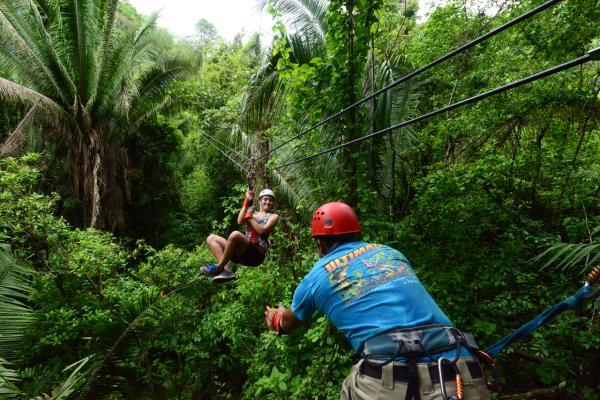
Nine adventure activities in bucket-list Belize PARTNER CONTENT
Thomas cook acquired by poland's esky group, cruise365 to diversify following £40,000 refurb as chief hints at more shops, classic collection inks deal to start packaging ryanair flights, the big question: is the 's' word starting to put customers off, thomas cook boss spells out ambitions for brand under new owner, hurricane beryl an 'opportunity' to highlight carriacou and petite martinique, says grenada, recommended for you.

Advantage chief: 'We export people, not economic growth – that stays here'

Can Lluc launches October fam trips to Ibiza

Aqua Expeditions to launch new ship ahead of Africa entry
Latest travel jobs.

Luxury Travel Expert - Australasia

Luxury Travel Expert - Asia

Store Manager - Barrhead (Retail)
Competitions.
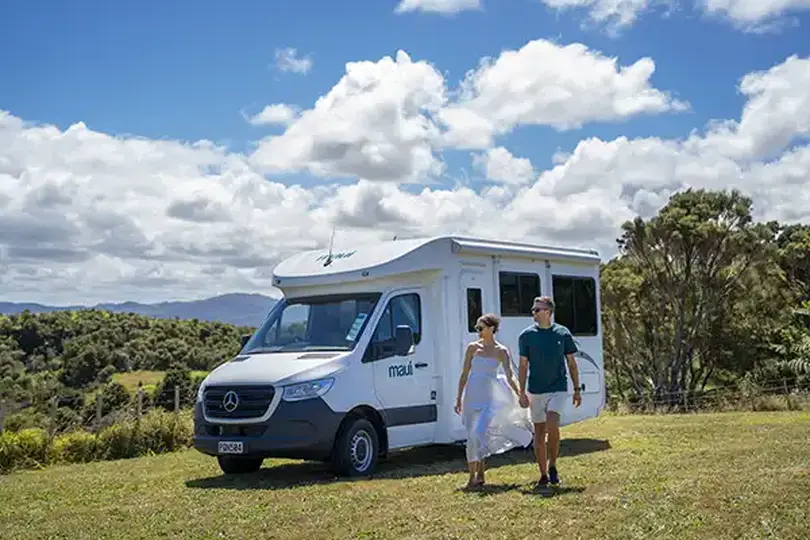
Win an Australia or New Zealand motorhome rental with maui

Win a spot on a VIP trip to Antigua and Barbuda this December

Win one of three hotel vouchers worth up to £1,200 with Virgin Voyages' Voyage Store

Win one of eight spots on an incredible Caribbean fam trip with British Airways
Upcoming events.

TTG Agenda 2024 – Autumn Breakfast

The Travel Industry Awards 2024 by TTG

Day of Luxury 2024

Luxpo October 2024

IMAGES
VIDEO
COMMENTS
Inside Kyoto is an online Kyoto travel guide. Complete Kyoto itineraries and coverage of essential attractions in each of Kyoto's fascinating districts. Inside Kyoto. ... Japan Travel Guides. There are several must-see destinations in Japan within easy reach of Kyoto. They all make great additions to any Kyoto itinerary.
September 2024. Japan is finally open! Travelers from most countries can now enter Japan without applying for a visa in advance. Best of all, there are NO Covid protocols to enter Japan: You do NOT need proof of vaccination or a negative test to enter Japan. Kiyomizu-dera Temple with cherries in full bloom: f11 photo / Shutterstock.com.
Kyoto is there to be uncovered and discovered, and once you have scratched the surface, it is a city sure to draw you back time and time again. Make an Enquiry. For more information email us: [email protected] or call: + 44 117 244 3380. Accommodation. Experiences.
The first two days of this itinerary are the same as our two-day itinerary (above) and then adds a half-day trip up to the mountain temple of Kurama-dera, and a few sights in the less visited Northern Higashiyama area. Kyoto Five-Day Itinerary. Five days is the perfect amount of time to spend in Kyoto.
Discover the top things to do in Kyoto, Japan's ancient capital full of history like Kinkaku-ji shrine and the geisha of Gion. ... Tokyu Harvest Club Kyoto Takagamine & Viala is a gorgeous hotel inside the historical Shozan Resort Kyoto. 4 7. ... Japan Travel is the leading resource for Japan travel information and the primary destination for ...
View from my room at the Kyoto Granbell Hotel, Gion Where to eat in Kyoto. As Japan's ancient capital, Kyoto is one of the best places to visit in Japan for foodies. Manzara-Tei in Pontocho 先斗町 is one of my favourites, sit at the bar in front of the kitchen and watch the Japanese chefs work their magic. Also, any restaurant in the narrow, lantern-lit Gion alleyways (Geisha district ...
Ryokan Tori. Mid-range. Ryokan Tori is located in Kyoto, 2 km from Kitano Tenmangu Shrine. The property is around 2.3 km from Nijo Castle and Kyoto Imperial Palace. The property is 3.2 km from Kinkaku-ji Temple and 3.7 km from Kyoto International Manga Museum. All guest rooms in the ryokan are fitted with a kettle.
Inside Kyoto. Apr 01, 2023 ... Shutterstock.com. Top 10 Japan Travel Hacks and Tips. I share my top 10 travel hacks and tips that will make your trip to Japan almost infinitely better ... Japan Alps to find soothing countryside ryokans. In fact, there are several superb ryokan within two or three hours of Kyoto, and some only half an hour away ...
Limousine busses are available at the Kansai International Airport Terminal 1 (#8 platform) and can reach the Hachijoguchi side of Kyoto Station in approximately 85-90 mins. Boarding from Terminal 2 (#2 platform) will take approximately 100-105 mins. The fare for both is 2,600 yen.
Japan Reopens! Visa-free independent travel to Japan formally begins on October 11th 2022. Inside Kyoto. Sep 23, 2022.
1. Tune in to the seasons. Kyoto is a very seasonal destination, so plan your trip accordingly. The spring cherry blossom season is when the city is at its most photogenic but also its busiest. If you want to visit during this time, you'll need to book accommodations a year or more in advance - expect to pay premium prices.
Kyoto Travel Guide. Resources with everything you'll need to make your next trip to Japan the best it can possibly be. A tour of the beautiful locations in Japan featured in Apple TV's new hit show. Join the 7,000+ other Japan enthusiasts who love getting my super cool emails in their inbox. Don't.
Hire A Travel Expert To Plan Your Japan Itinerary. If you would like to hire a travel expert to help you plan your own customised Japan itinerary, please contact my company Japan Travel Consulting to discuss your needs. Itinerary Summary. Duration: Three days of 6 to 8 hours of touring (not including evening strolls).
Moon Viewing Events in 2024. 04.09.2024. KYOMAF 2024 - Special Contents of the Biggest Anime & Manga Event in Kyoto (September 21st & 22nd) 26.08.2024. We added the new "Events in Kyoto" brochure (Sep 2 - Sep 15) 03.07.2024. Avoid heatstroke while traveling in Japan.
Kyoto was the capital of Japan for more than 1,000 years, and is naturally full of historical attractions alongside a plethora of fantastic restaurants, shops, and nature. But with so much on offer, planning a Kyoto itinerary can be overwhelming, which is why it's best to start at the basics. In this Kyoto guide, we'll introduce everything you need to know about Kyoto's history, climate ...
Ultimate 2024 Kyoto, Japan Planning Guide. Our Kyoto, Japan planning guide offers tips & tricks, recommendations for hotels and other accommodations, best temples & shrines, transportation hacks, where to eat, crowd info, what it's like to visit post-reopening, why we love the city, and more. (Updated January 3, 2024.)
4 days is an excellent amount of time to spend in Kyoto. This will give you a full day each in Higashiyama, Arashiyama and Fushimi, plus the opportunity to take at least one day trip, whether to deer-filled Nara, sacred Mt. Koya or magnificent Himeji Castle in Hyogo prefecture. Alternatively, if you've seen Kyoto's main sights on a previous ...
Kyoto's grand shrines, ancient castles and historical streets. Ohara's crisp mountain air, stunning autumn foliage and symbolic gardens. Kyoto's traditional Japanese inns, an essential convergence of Japanese tradition and culture. Kyoto cuisine, which perfectly encapsulates the Japanese spirit and art of food preparation.
From Tokyo, connect from one of its airports to a central station in the city and hop on the Shinkansen bullet train for a two-hour journey. From Osaka's Kansai International Airport (KIX), which does have a smattering of direct flights to the states, the train to Kyoto is about 90 minutes. Hotel The Mitsui Kyoto. Getty Images.
Inside Kyoto. 10,124 likes · 2 talking about this. Your comprehensive travel guide to Kyoto, Japan
Here's a short list of solo-traveler-friendly places: JAM Hostel Kyoto Gion. With a brilliant location right on the doorstep of Gion, this friendly hostel comes complete with a great downstairs bar where you can meet other travelers and sample some great sake. K's House Kyoto.
A curtain of cold water crashed down from one of those shafts, splashing those of us seated in the front of our open-sided 12-person Lake Biwa Canal Cruise boat.. While many people come to Kyoto ...
Ogata at The Shinmonzen was brought to life by Shinichiro Ogata, founder of Tokyo-based studio Simplicity, long respected for its contemporary reimaginings of Japan's traditional culture for daily life. This one follows in the footsteps of flagship Ogata Paris, which opened four years ago with a boutique, restaurant, tea salon and gallery in a 17th-century hôtel particulier in the Marais ...
Travel to Japan's most popular cities on this 8-night semi-guided tour, stepping into shrines, enjoying cultural festivals, and indulging in fresh sake and sushi.This package includes all the travel essentials you'd need, plus two full-day tours, a bullet train ride and two lunches while saving $1100 compared to similar trips.
4 p.m. | Local Design Shops. Kyoto is the kind of place you could roam around endlessly. The streets are compact, and it feels like you could spread your arms and reach from one side to the other.
See our full Tokyo Two-Day Itinerary for details. Day 4: Travel to Takayama. Take the shinkansen from Tokyo to Nagoya and change to a Hida Wide View express train to Takayama. The total journey takes 4 hours, 20 minutes, and costs Y13,930. The Japan Rail Pass covers this leg.
The report details other initiatives already in action, Inside Travel aims for a 10% reduction in emissions caused by client travel by the end of 2025. With 97% of emissions coming from customer trips - 67% from international flights - the operator now recommends the least emitting flight option, favouring direct routes and the most modern ...